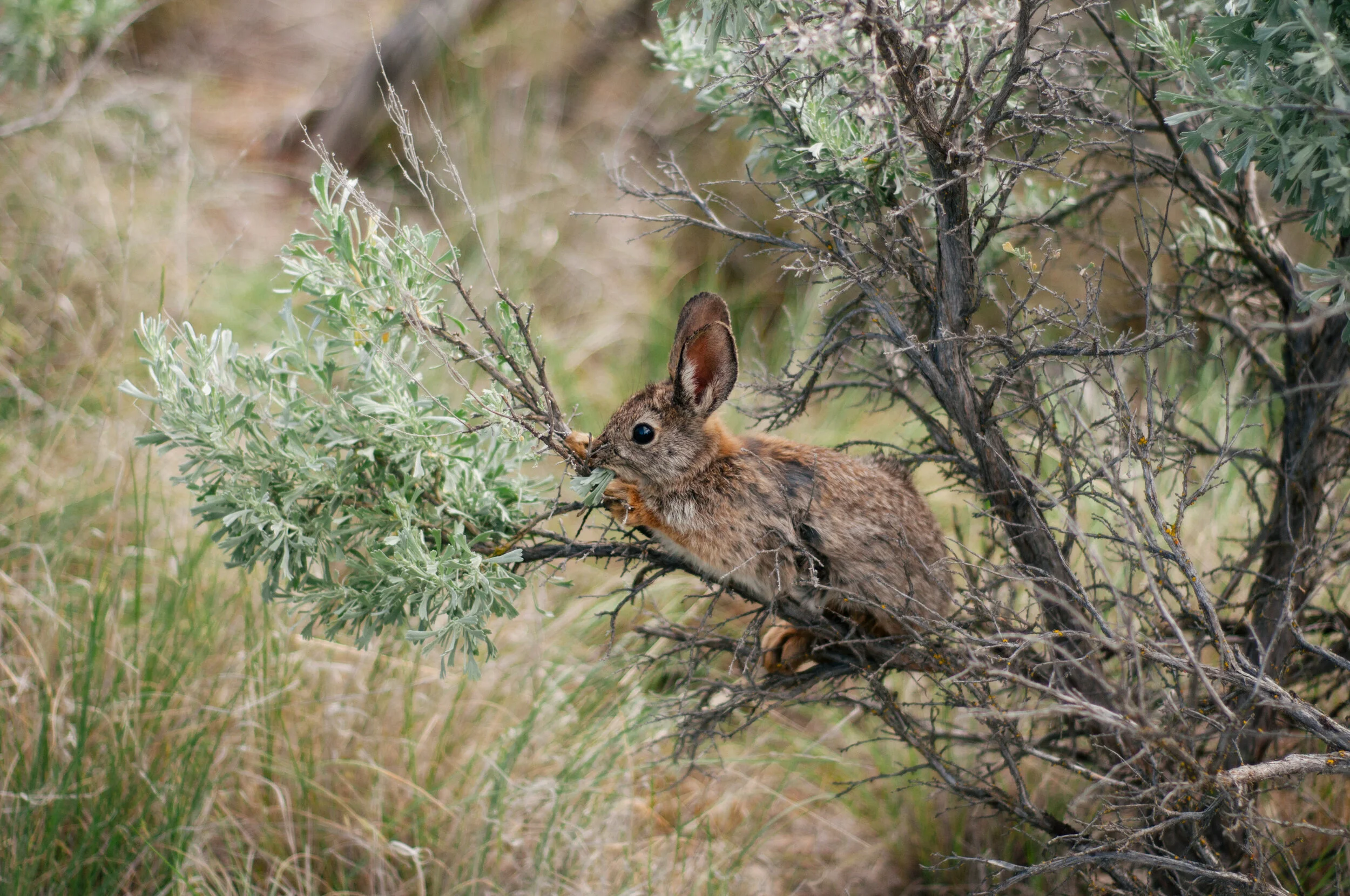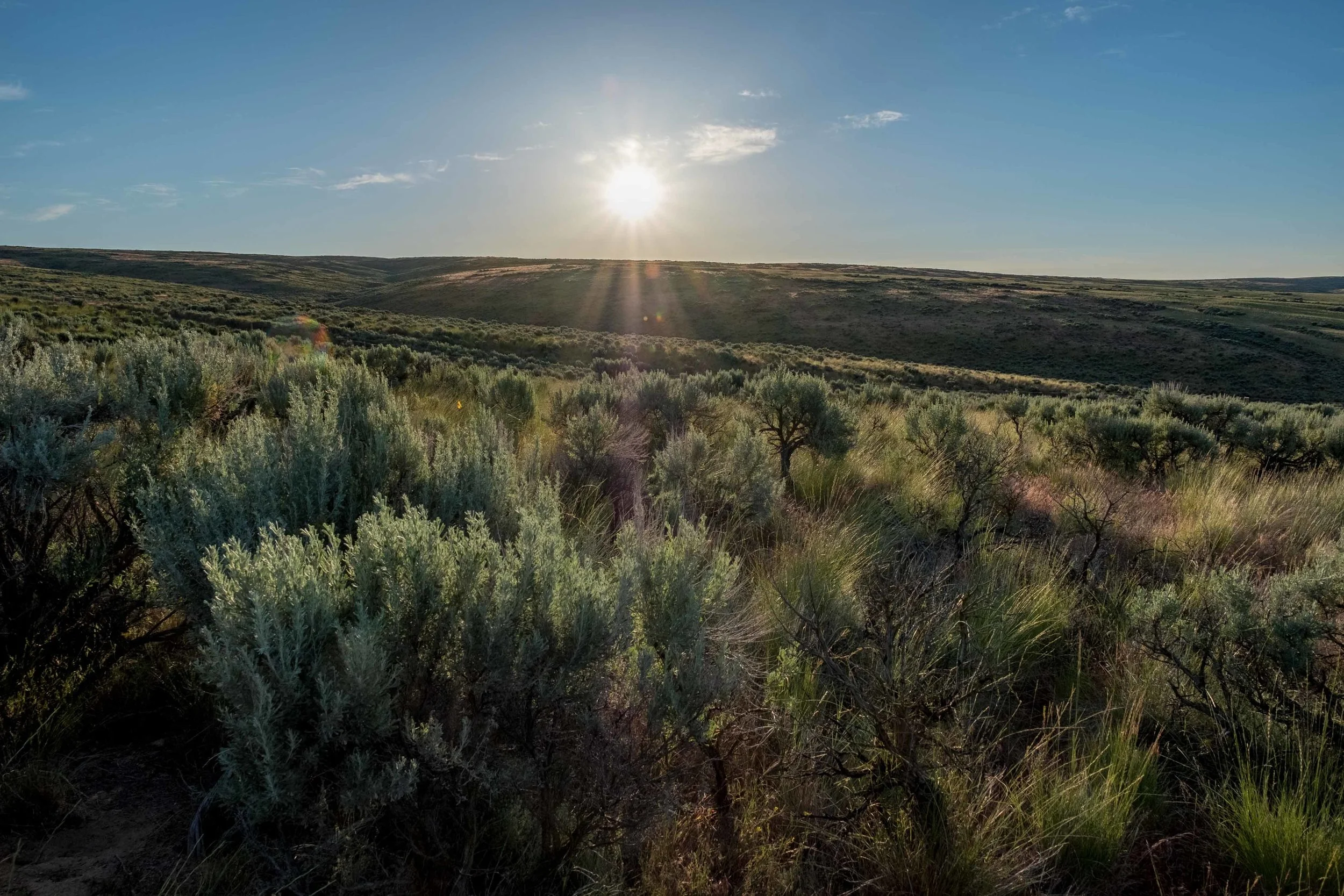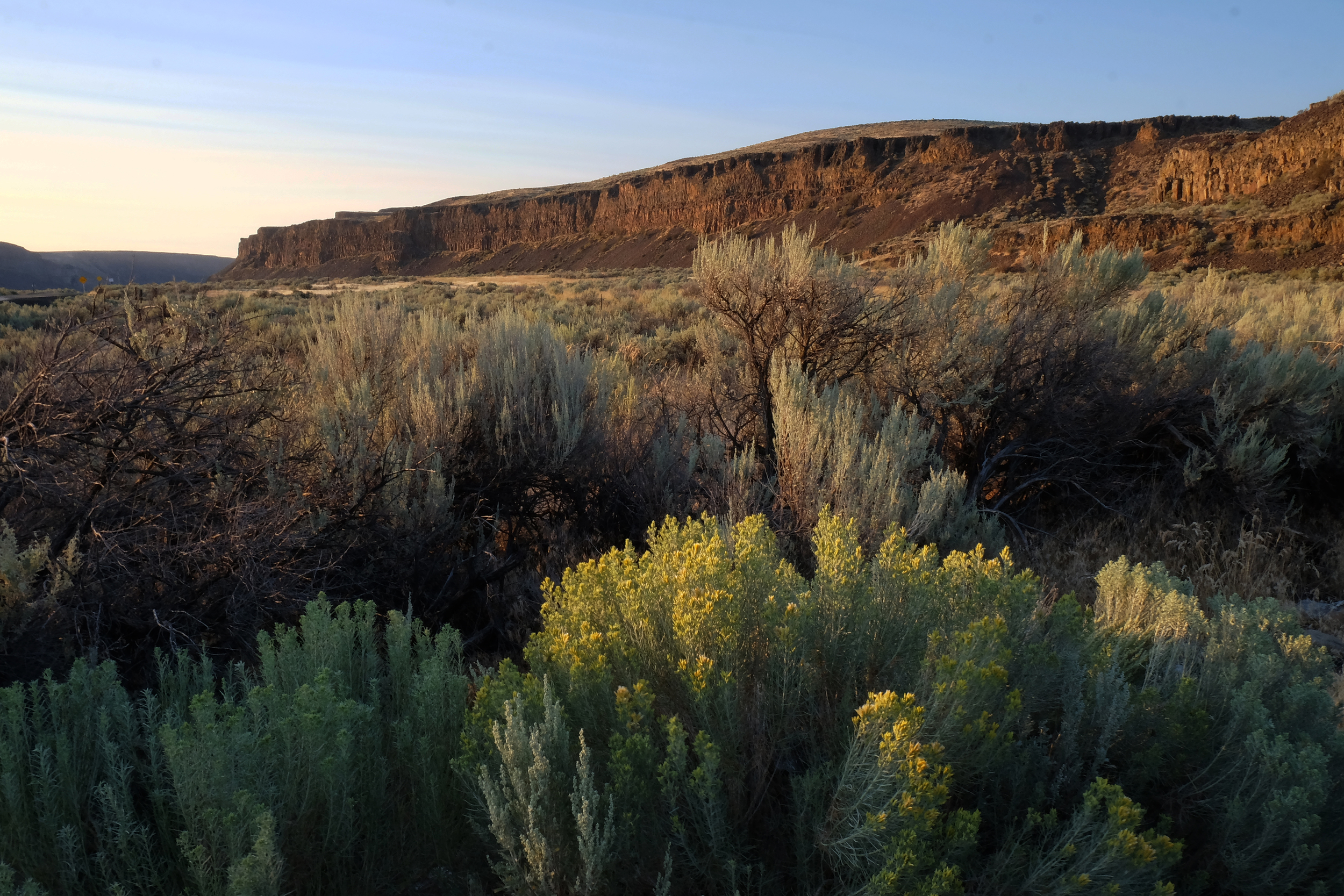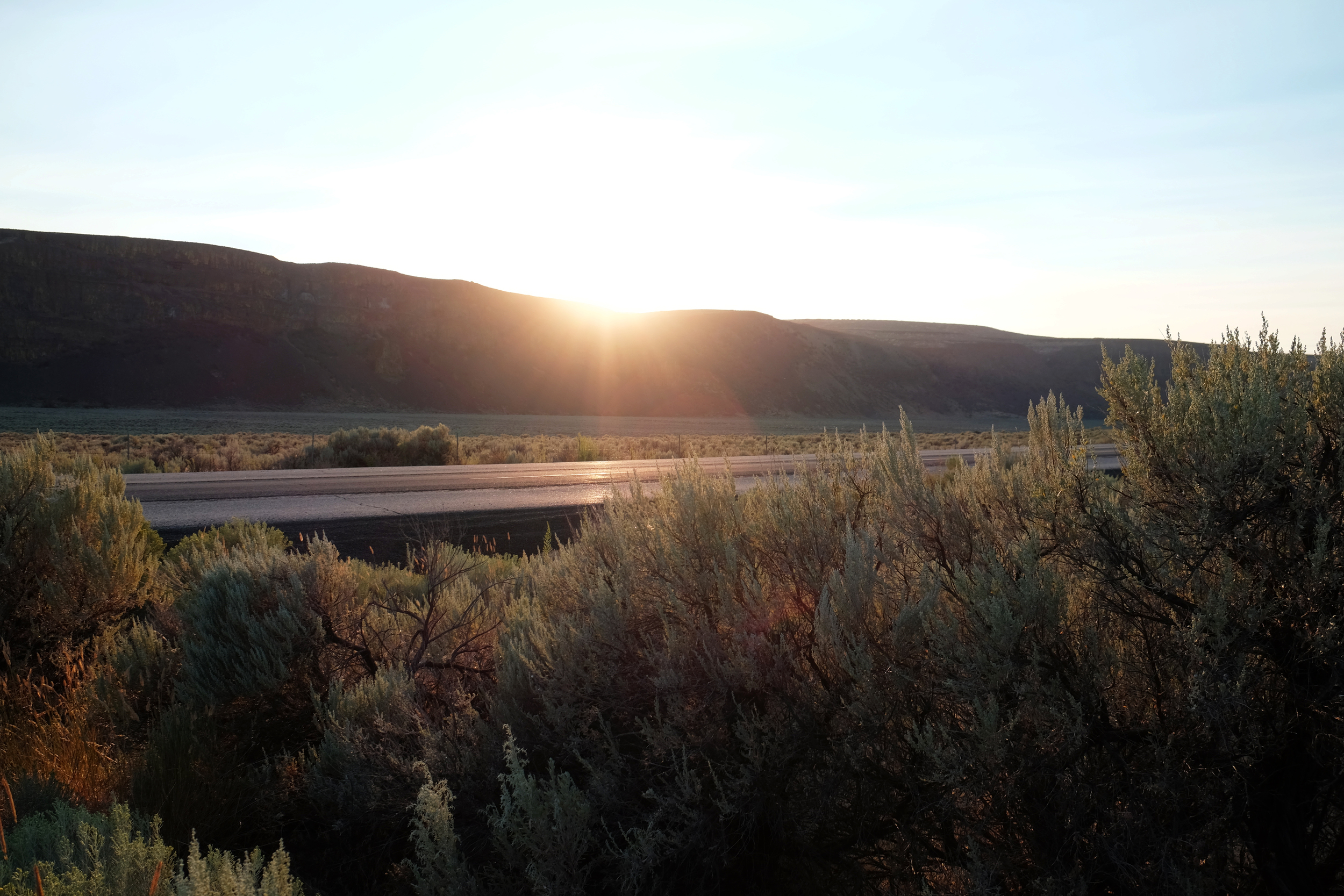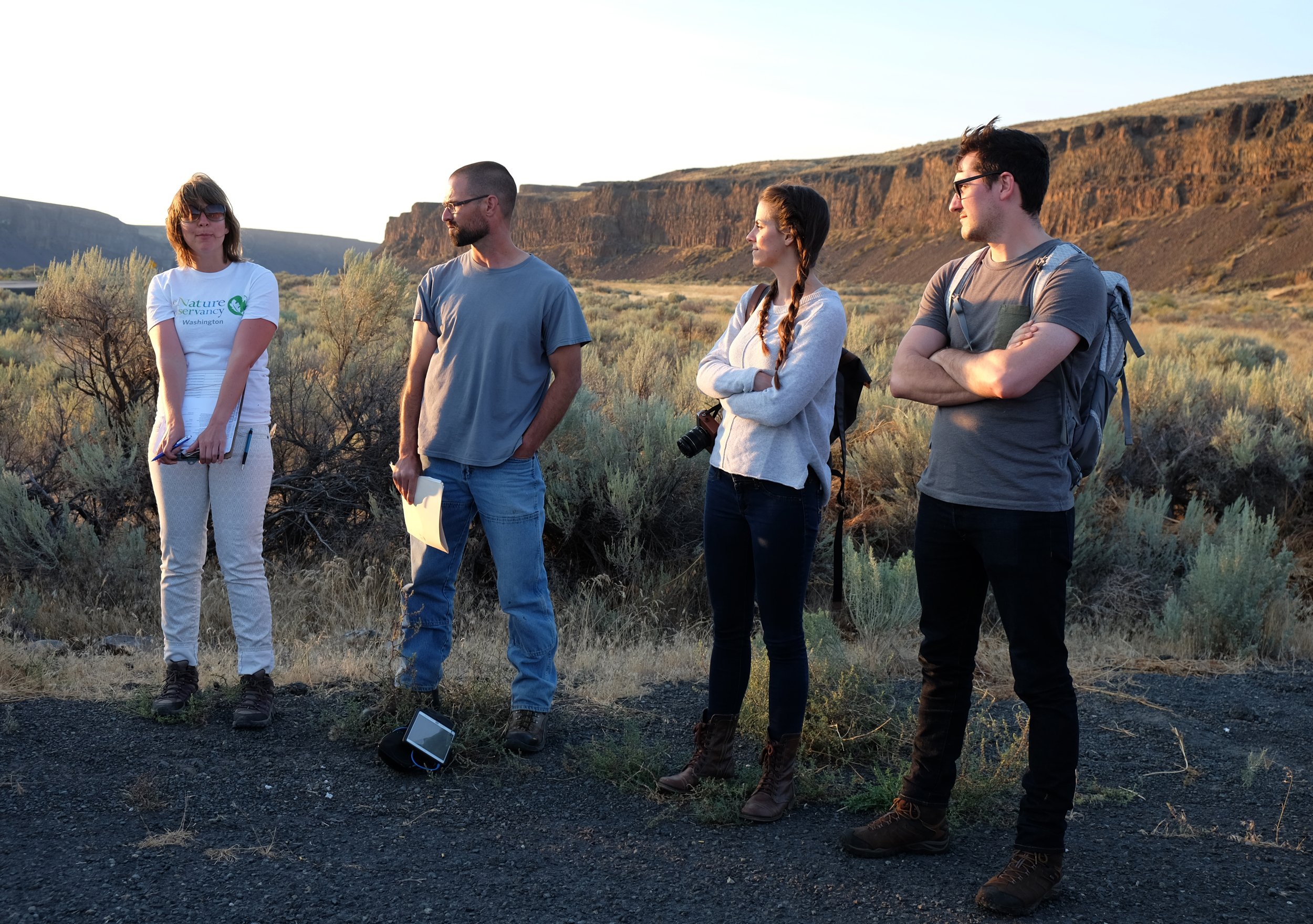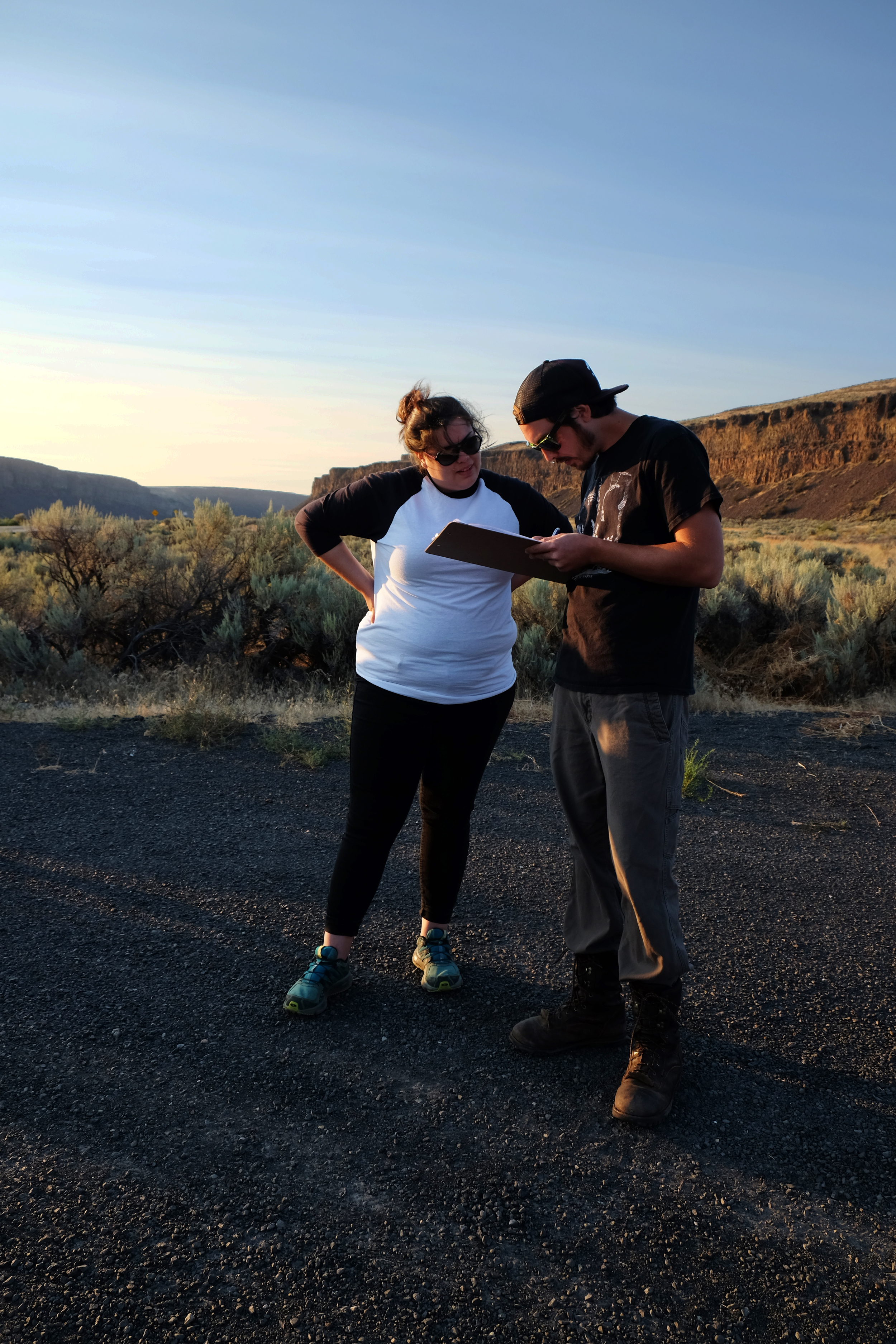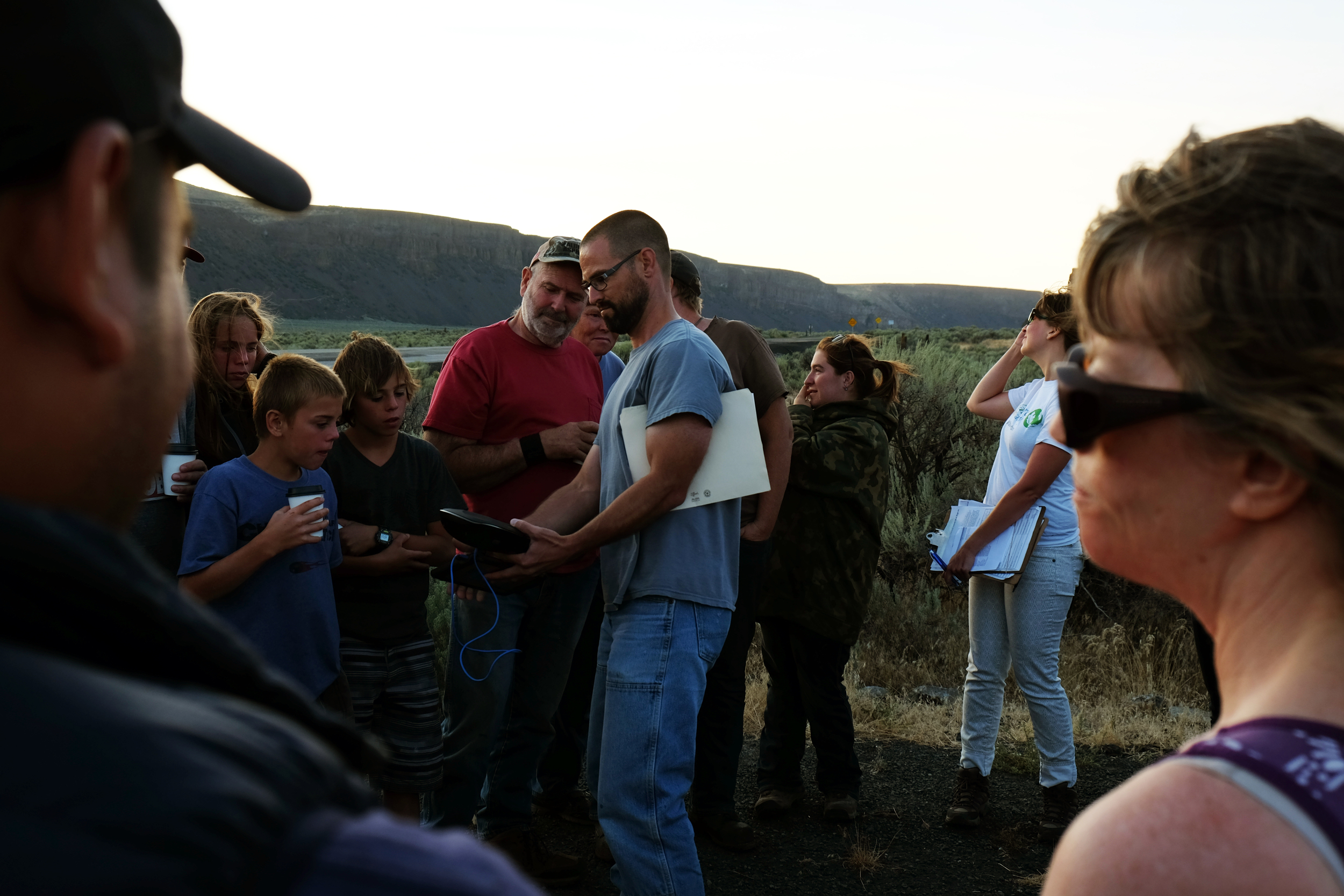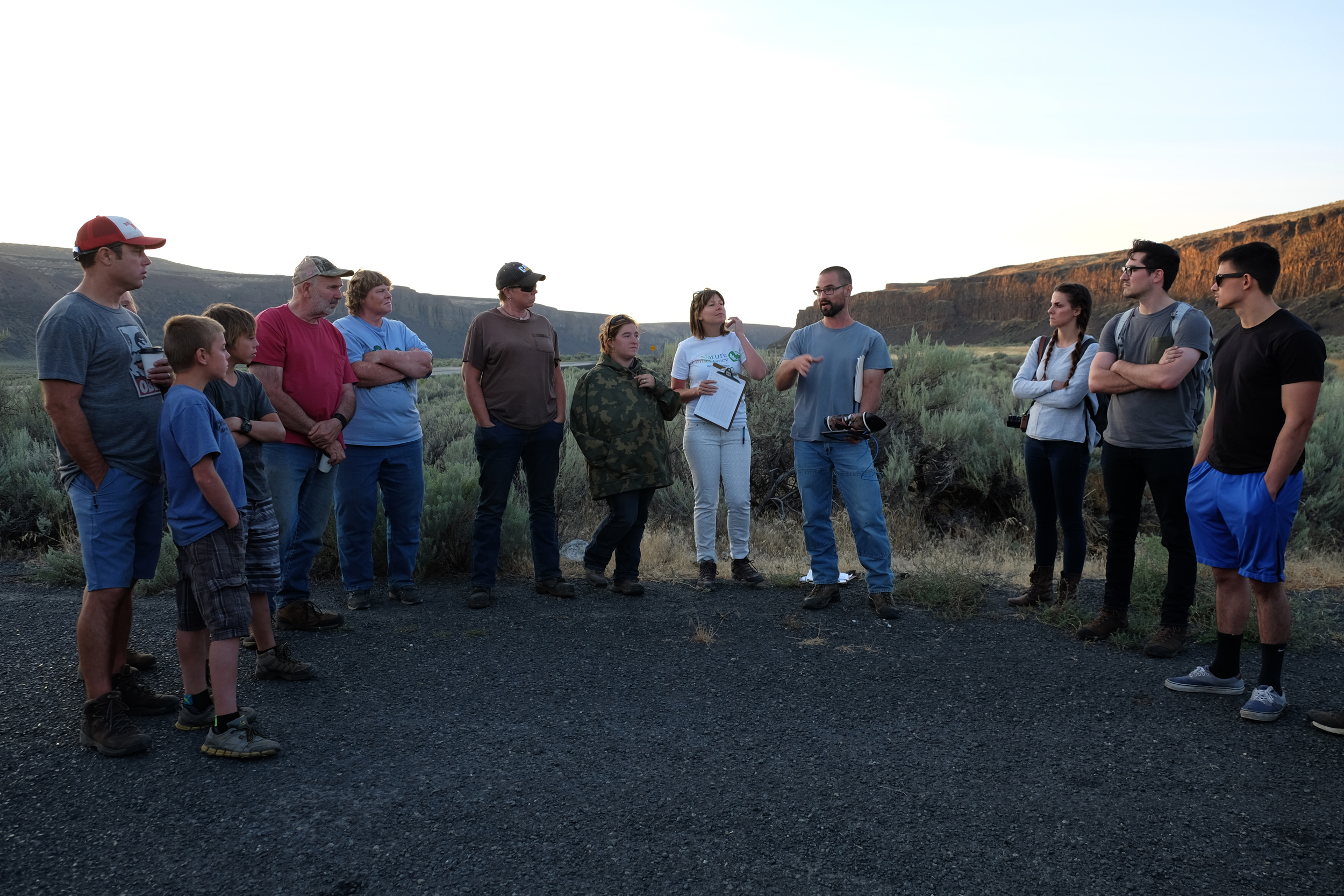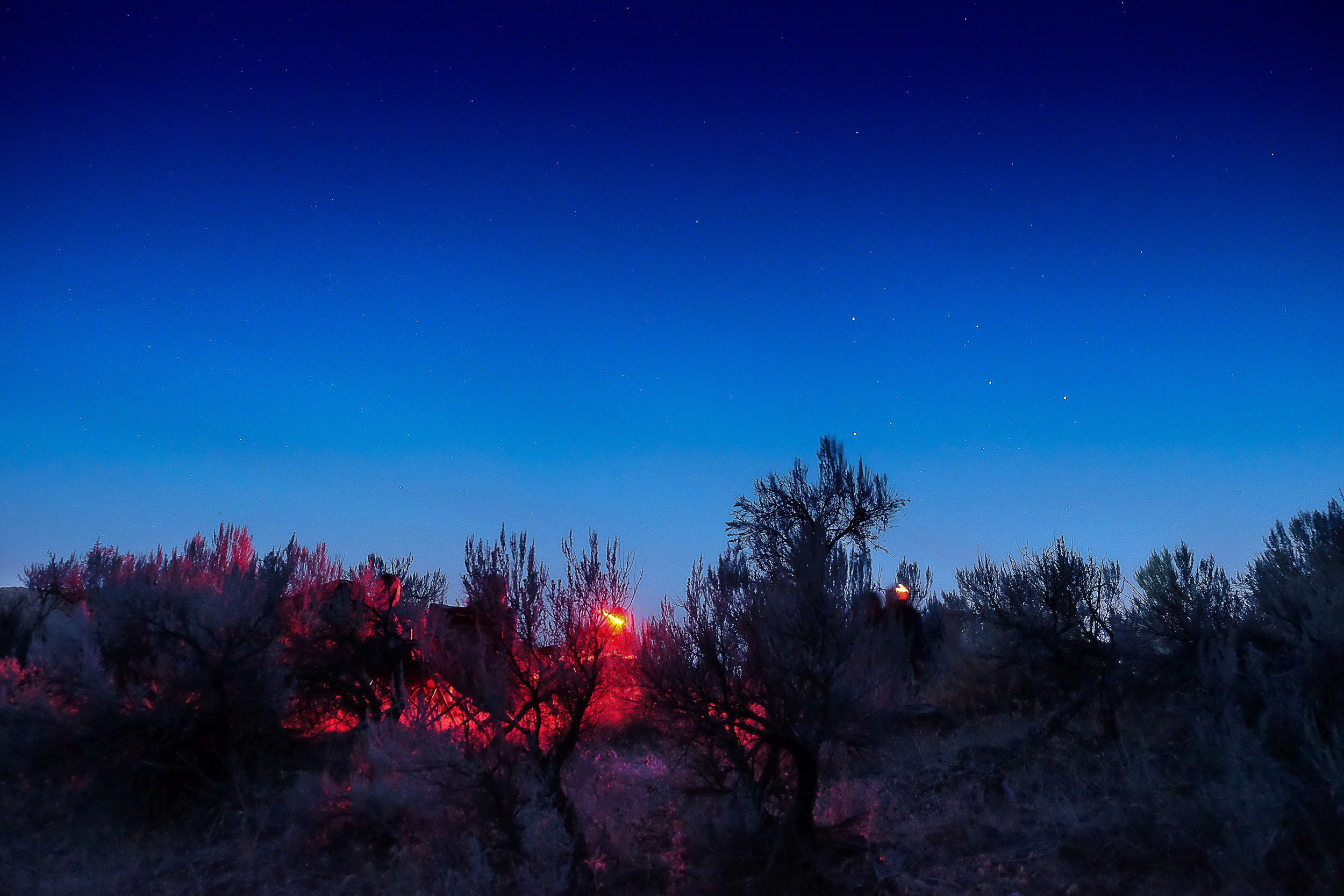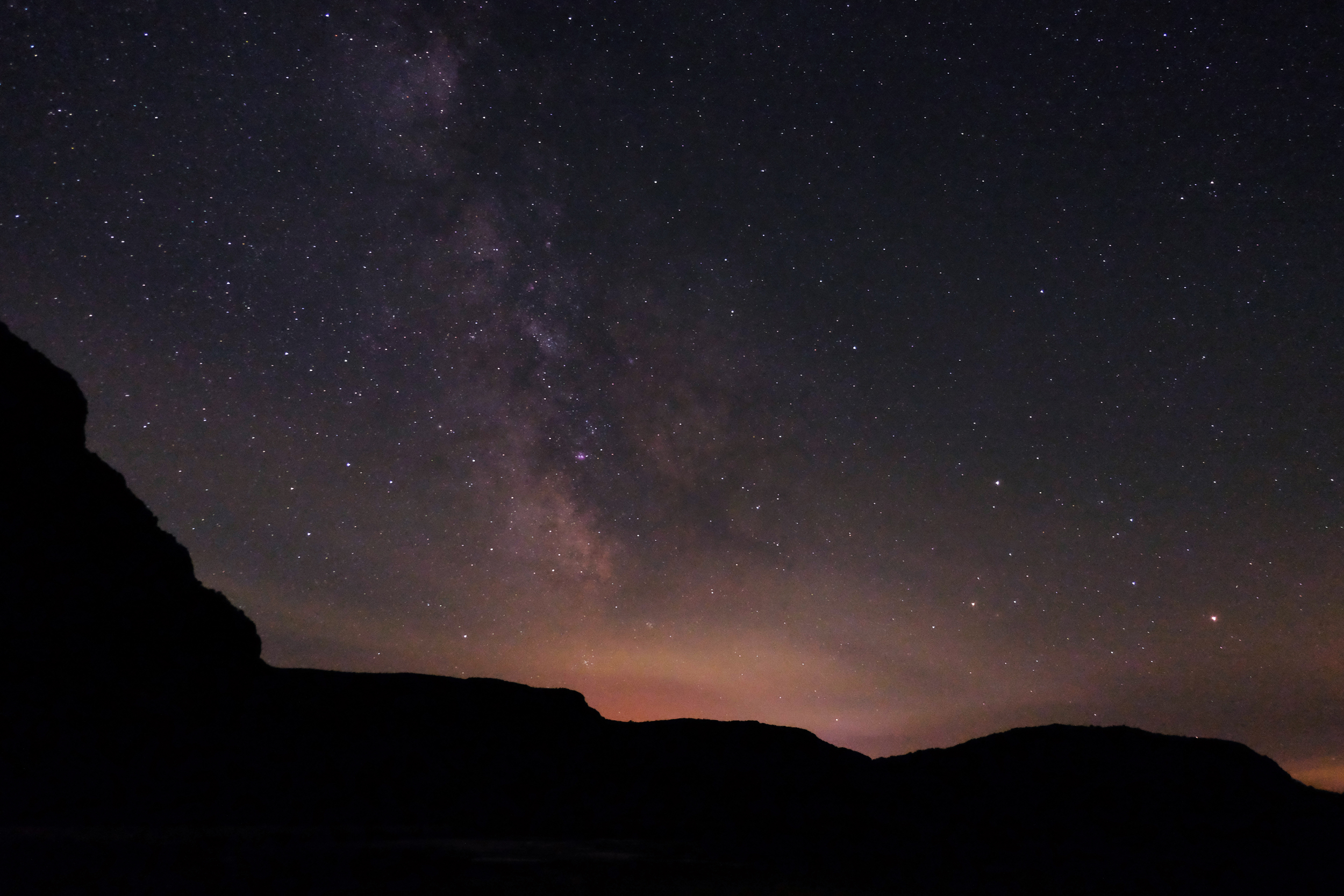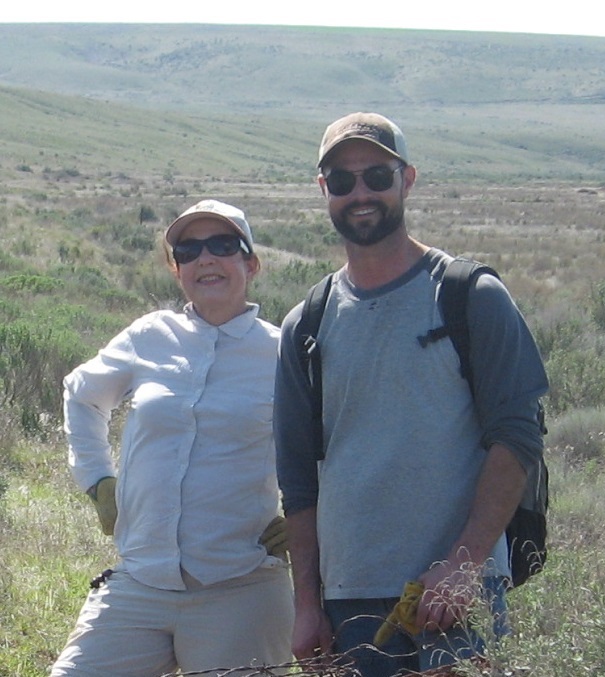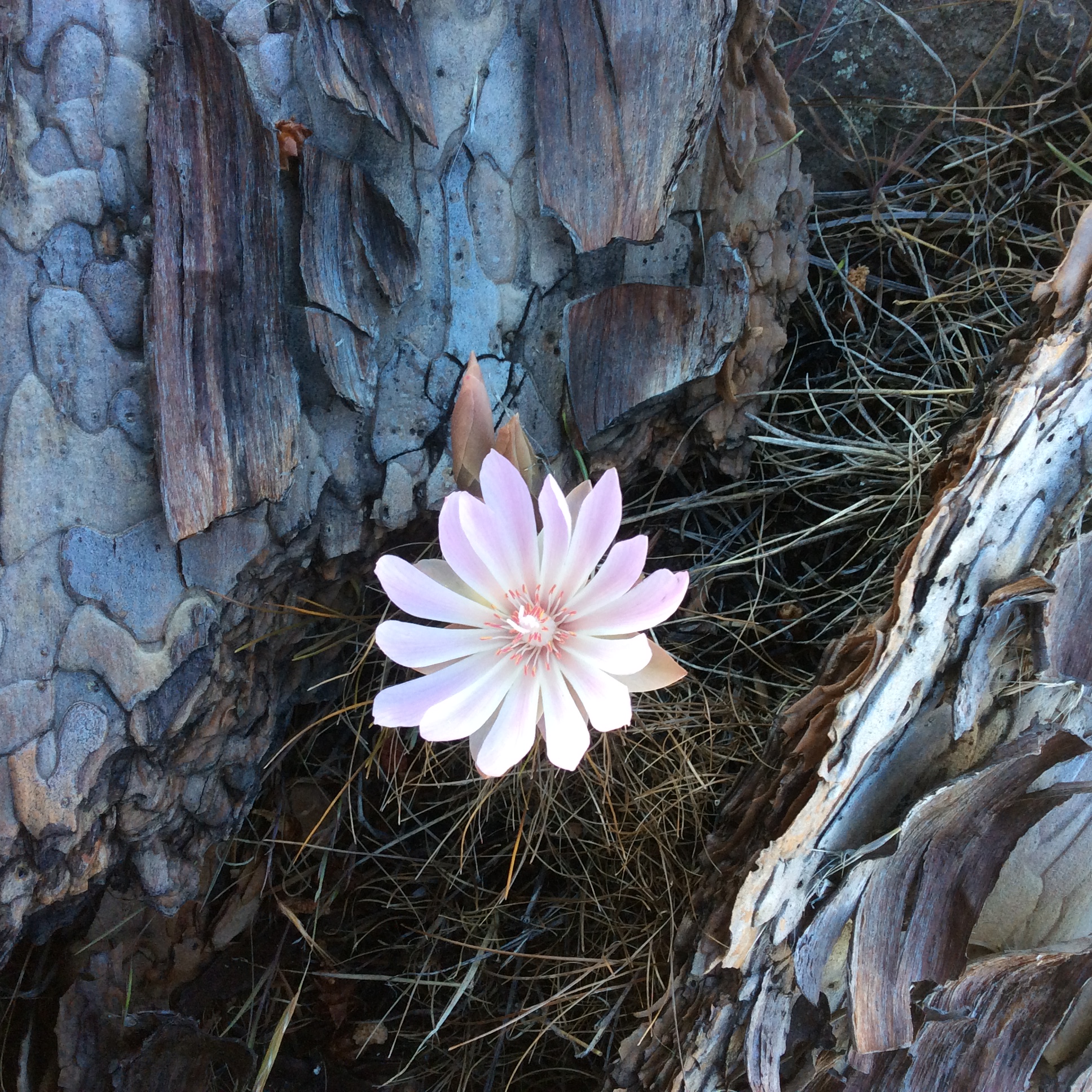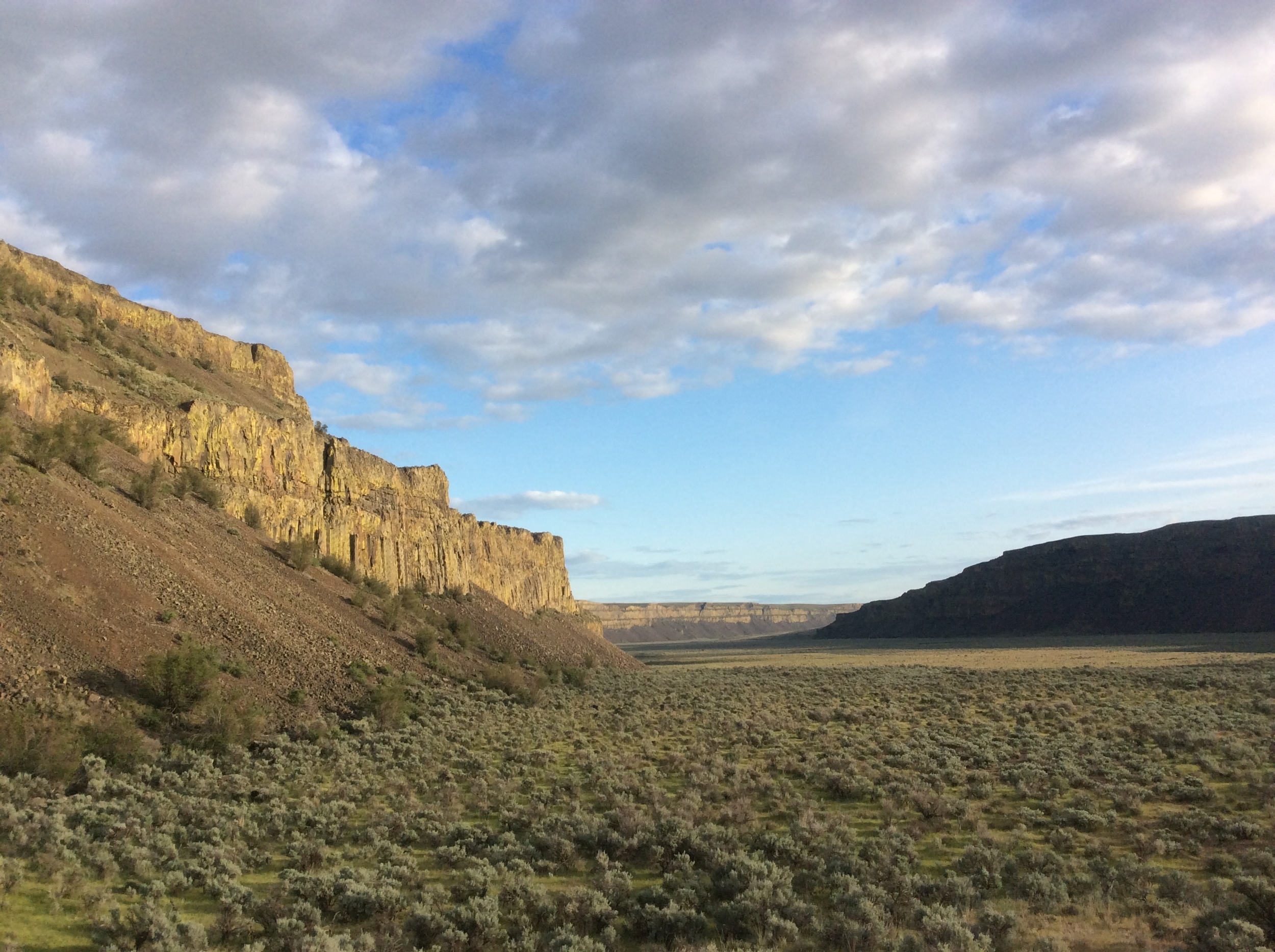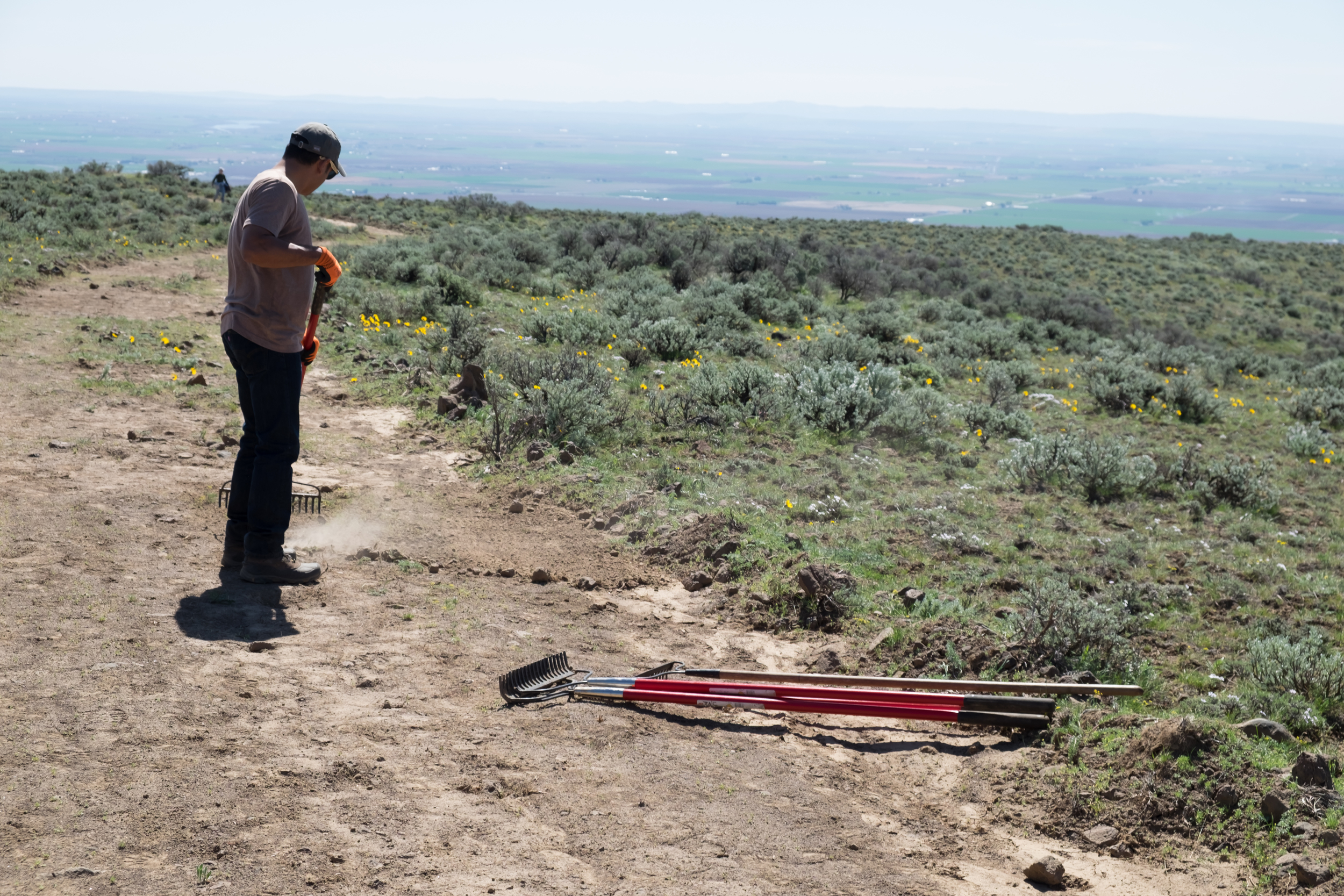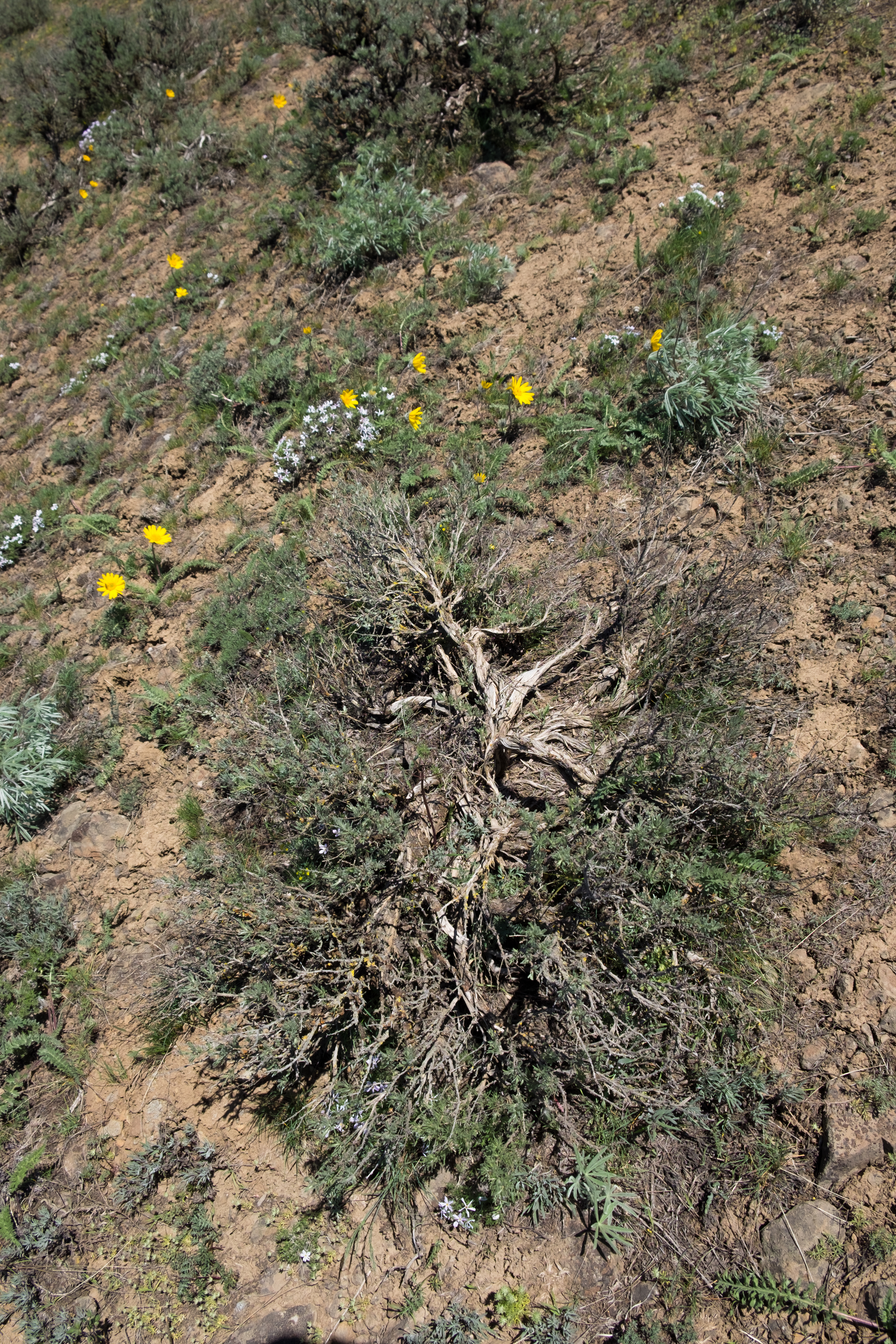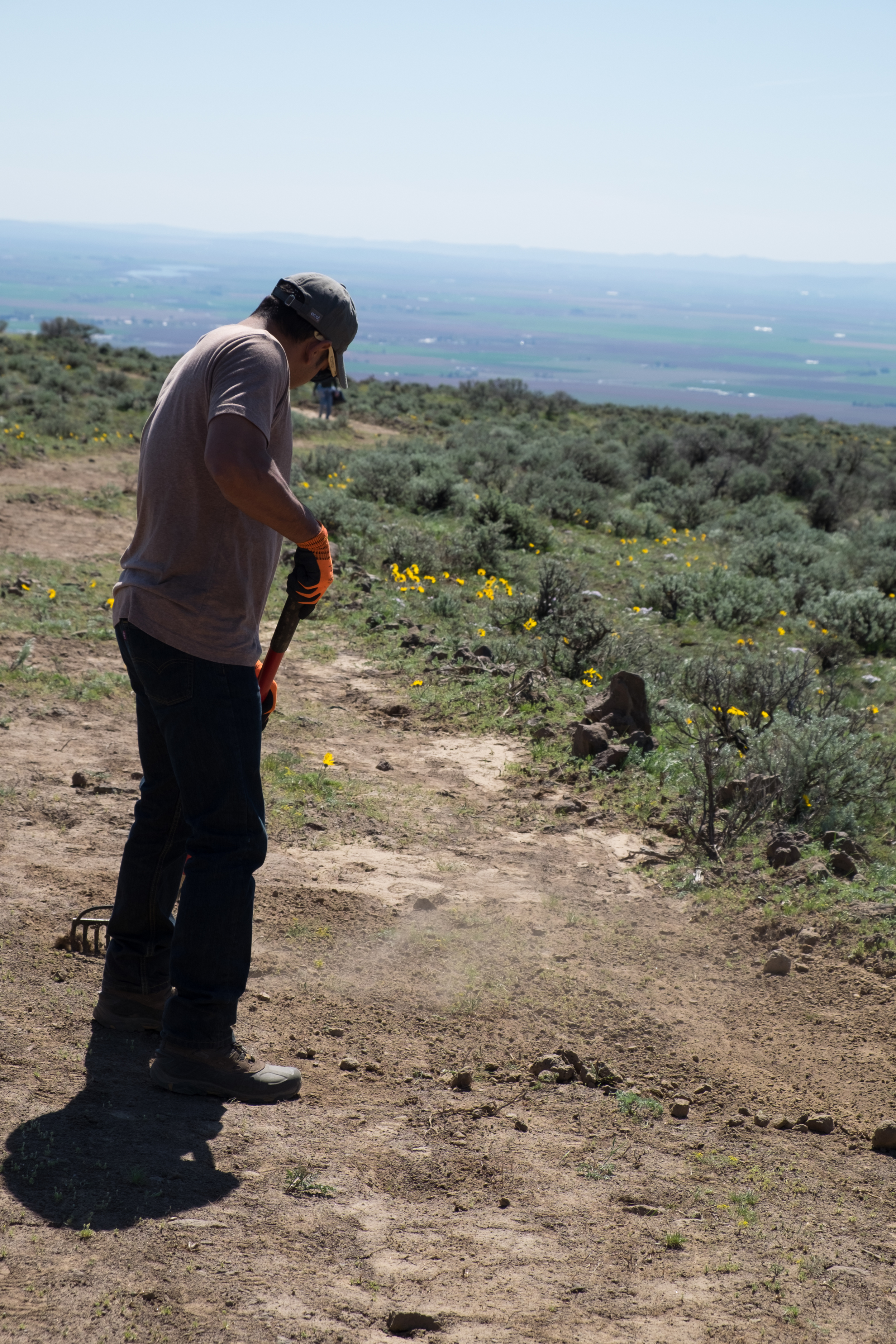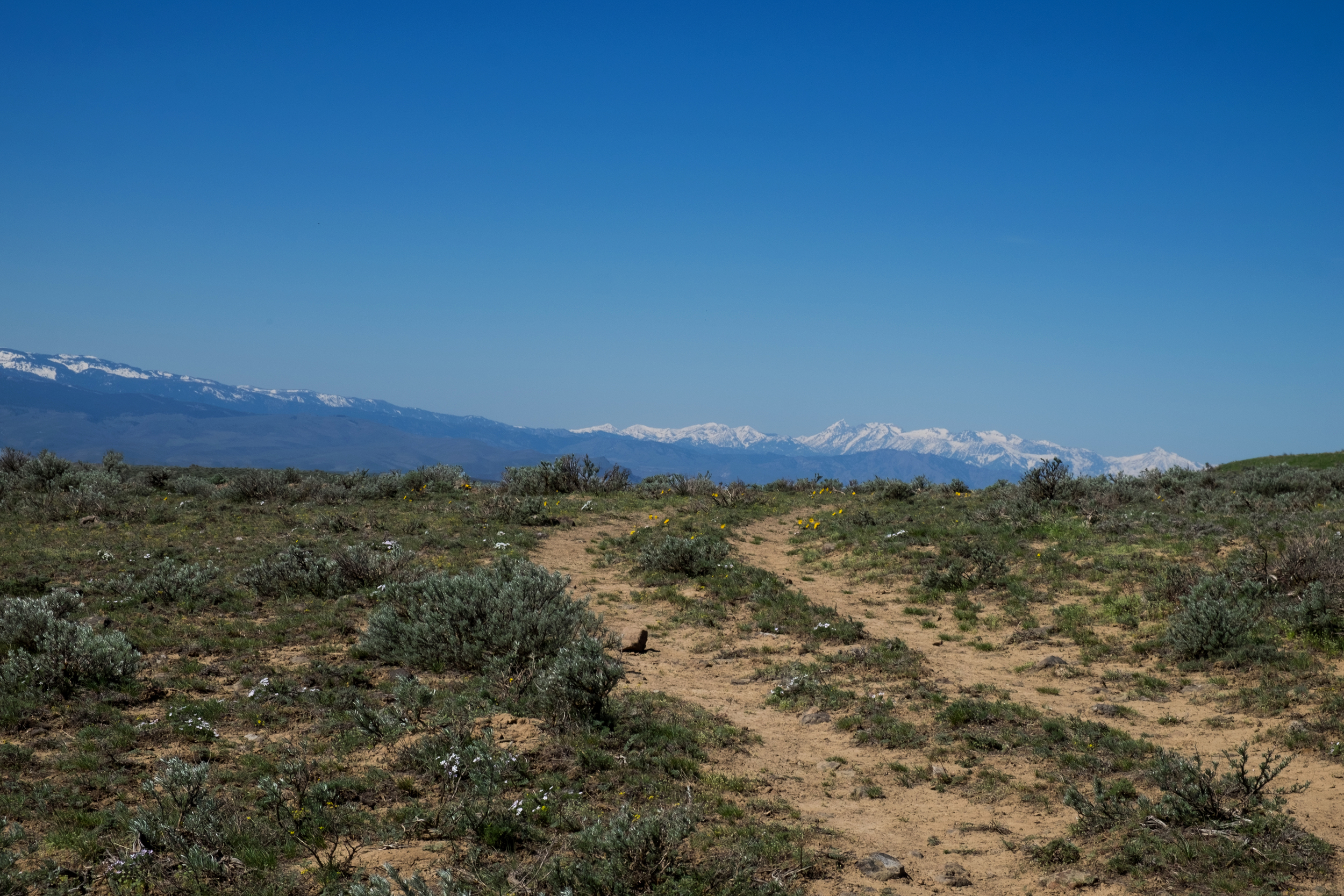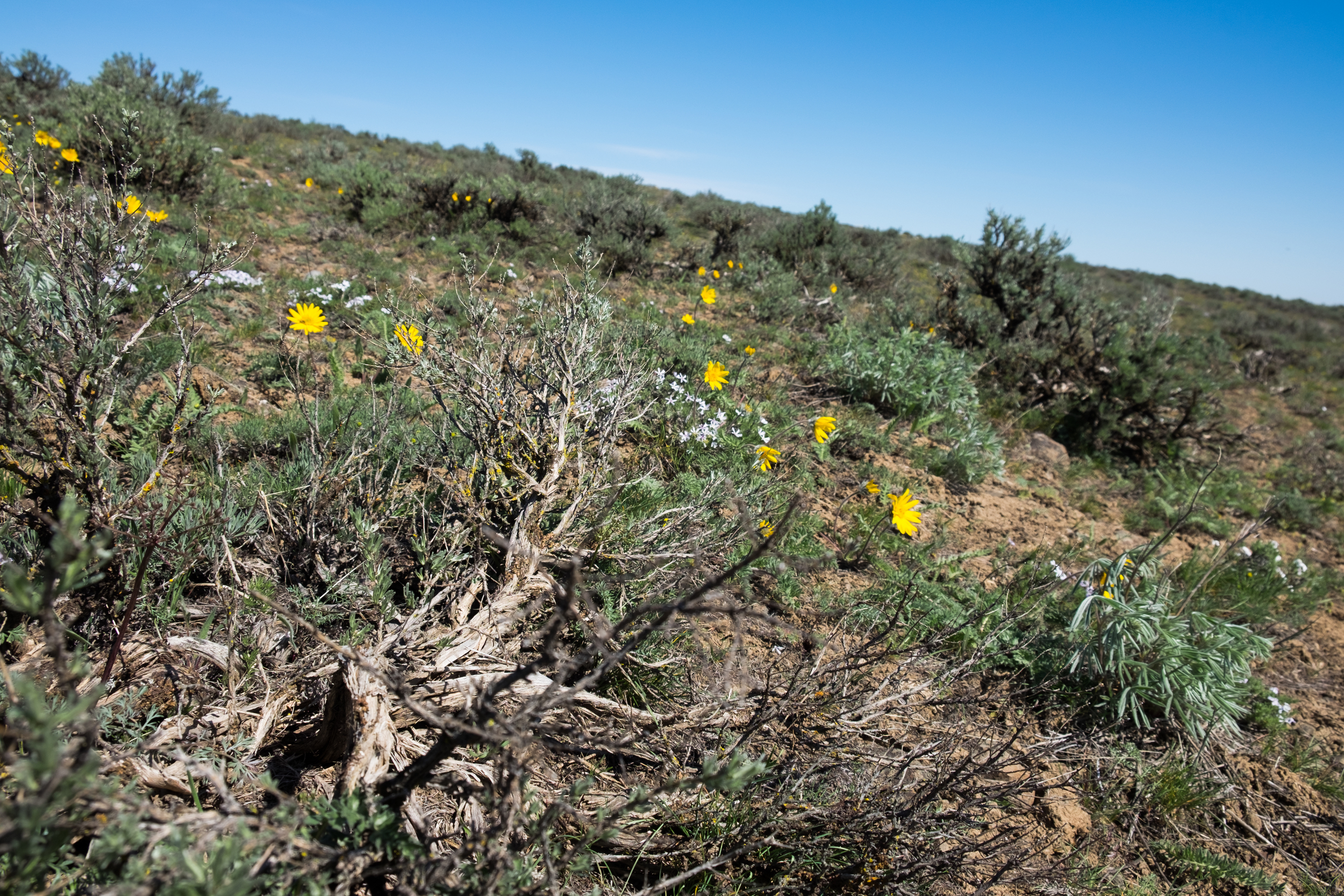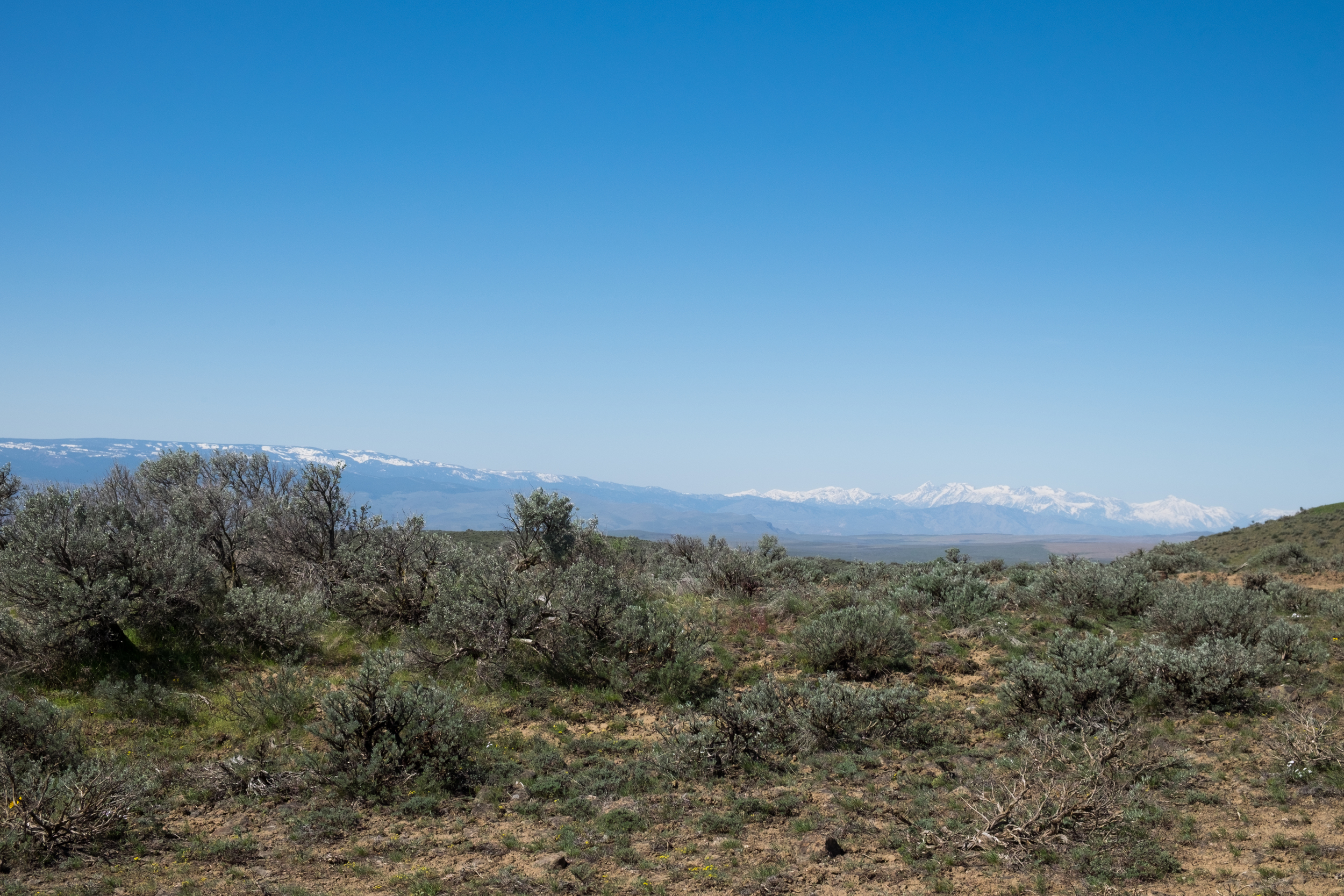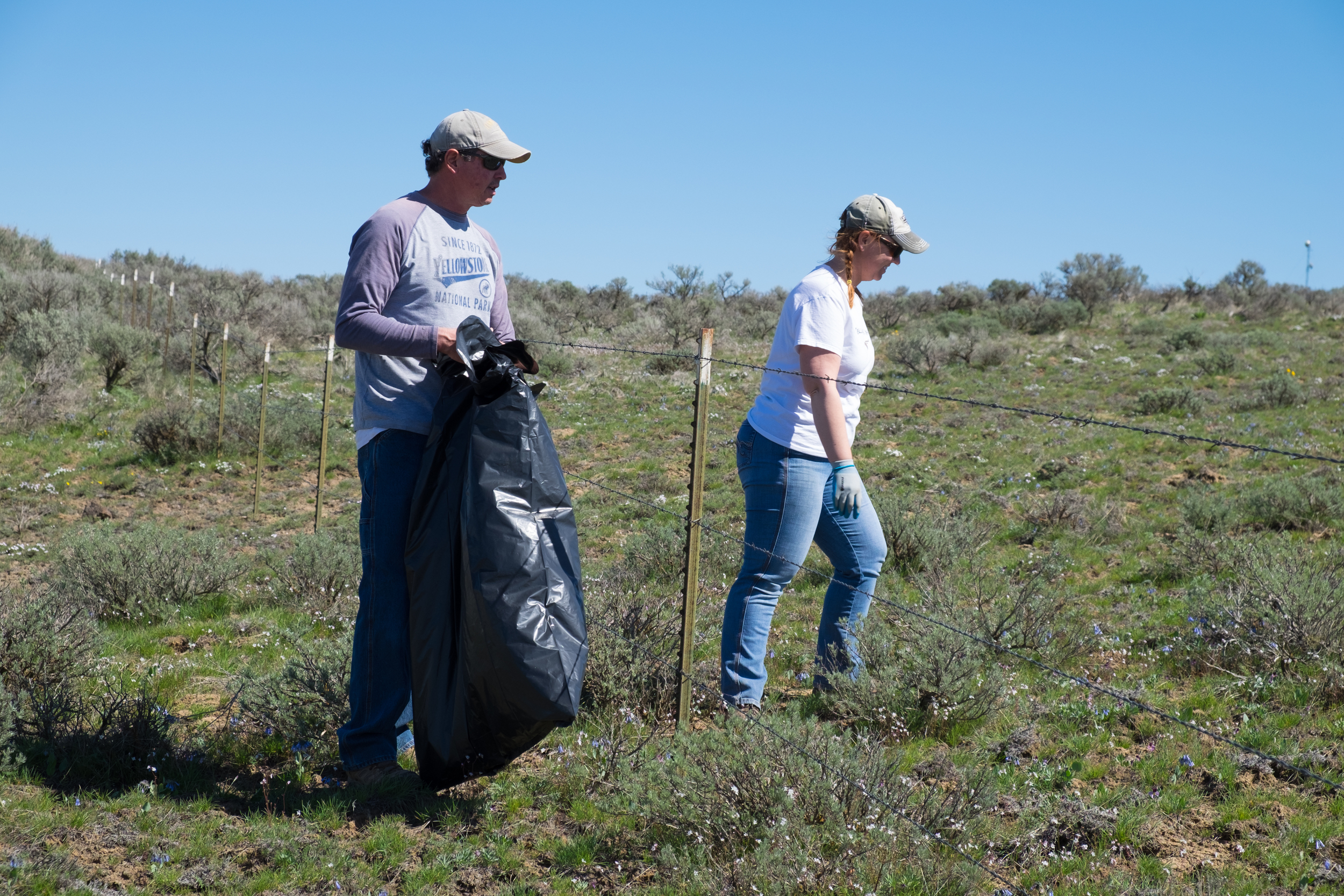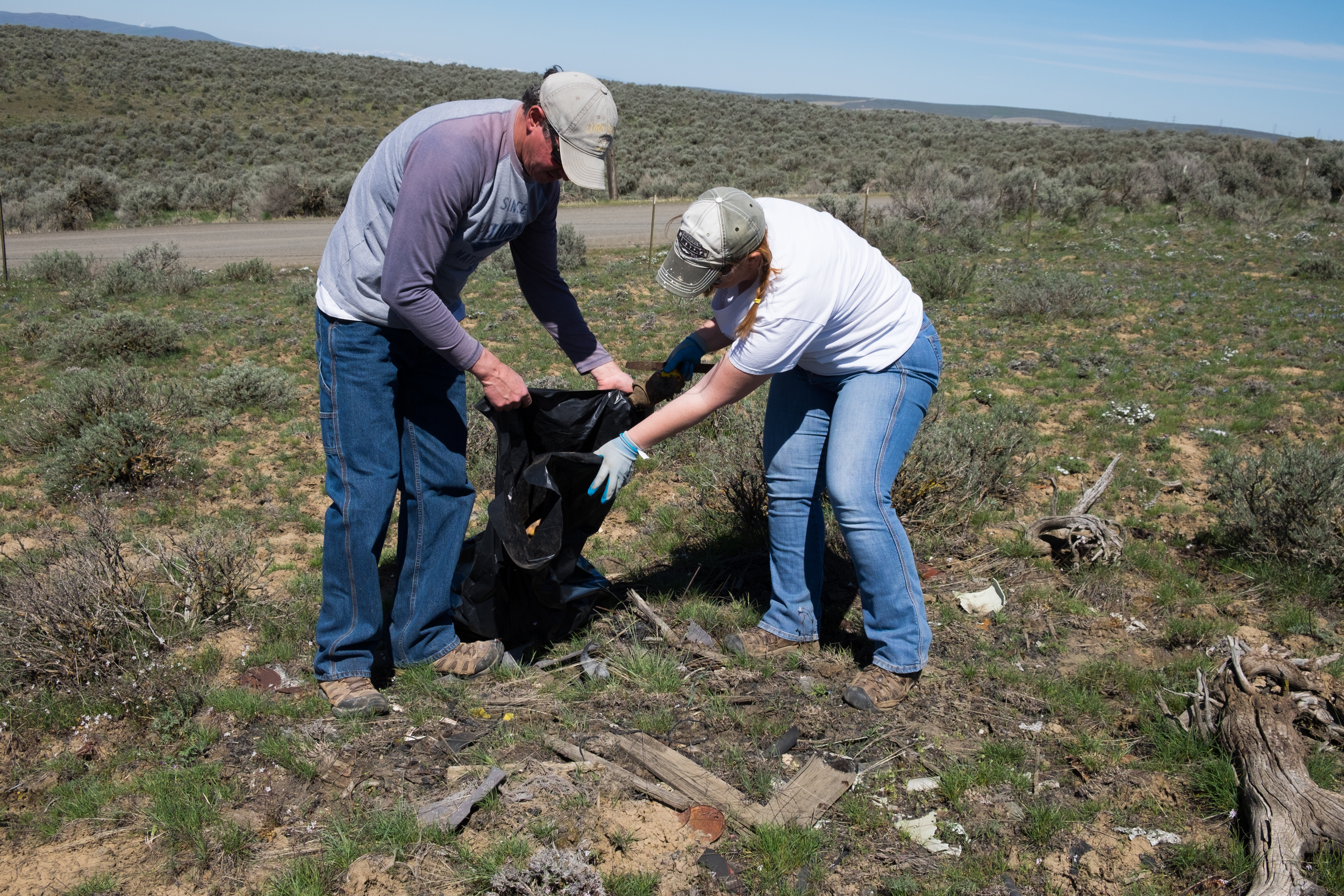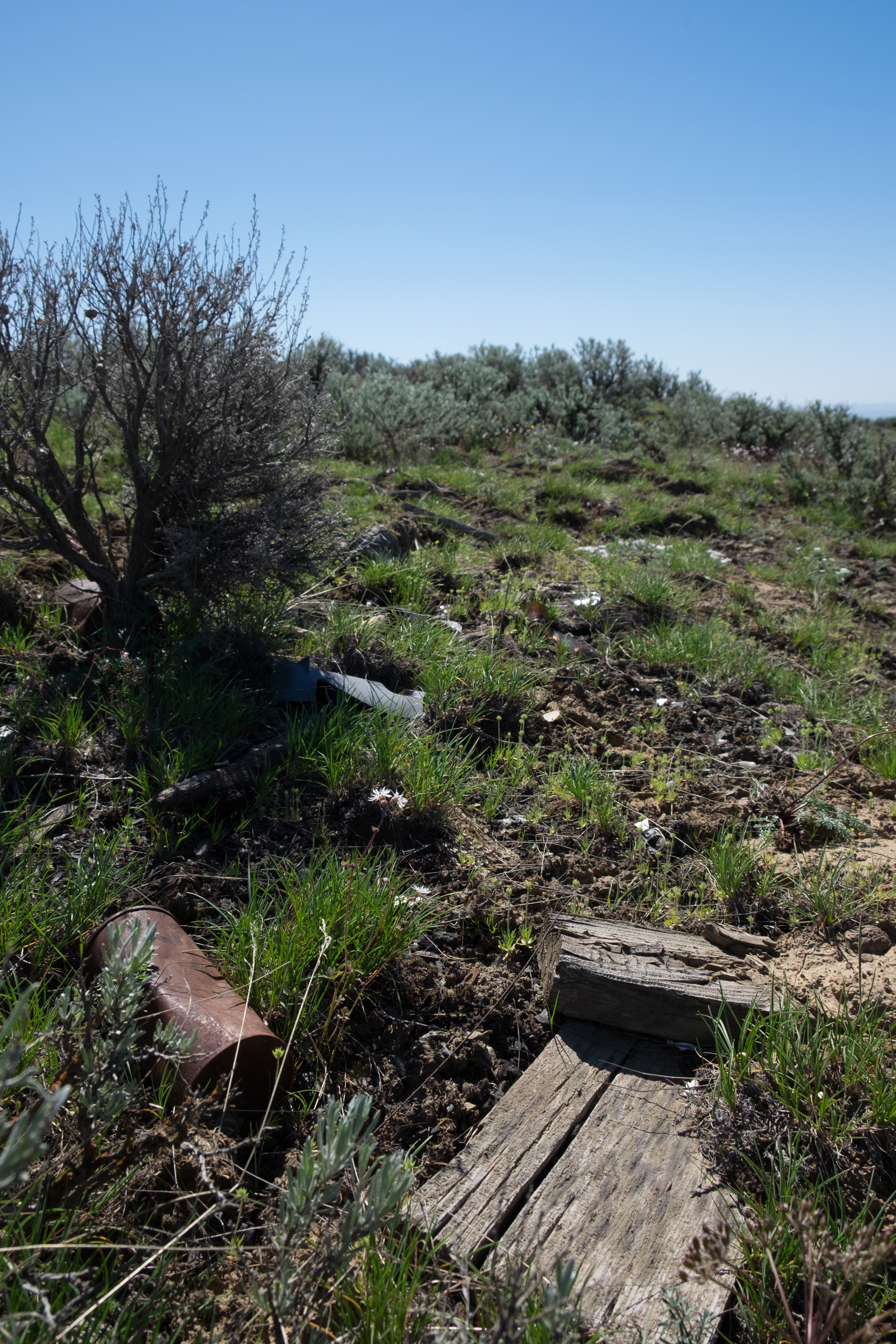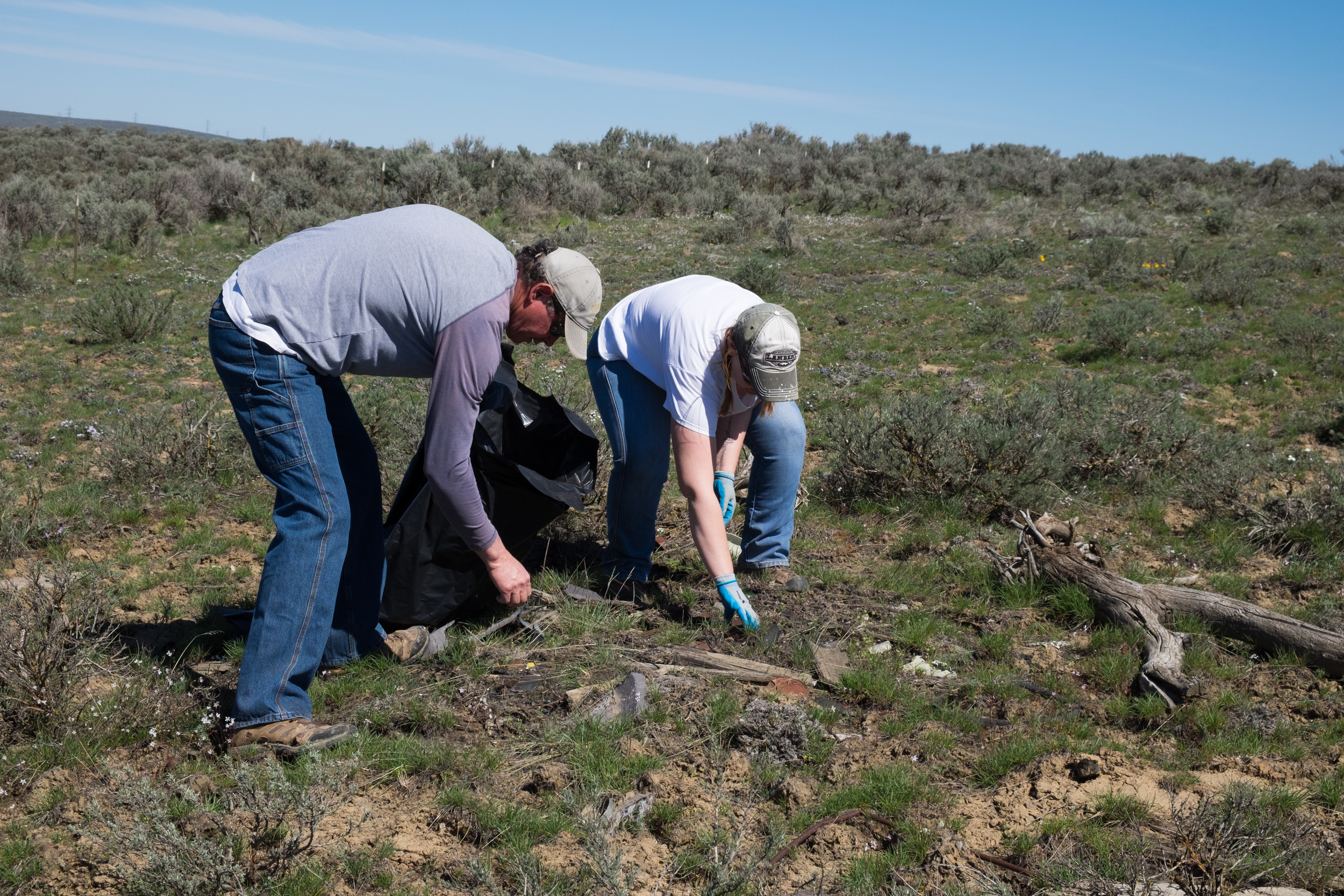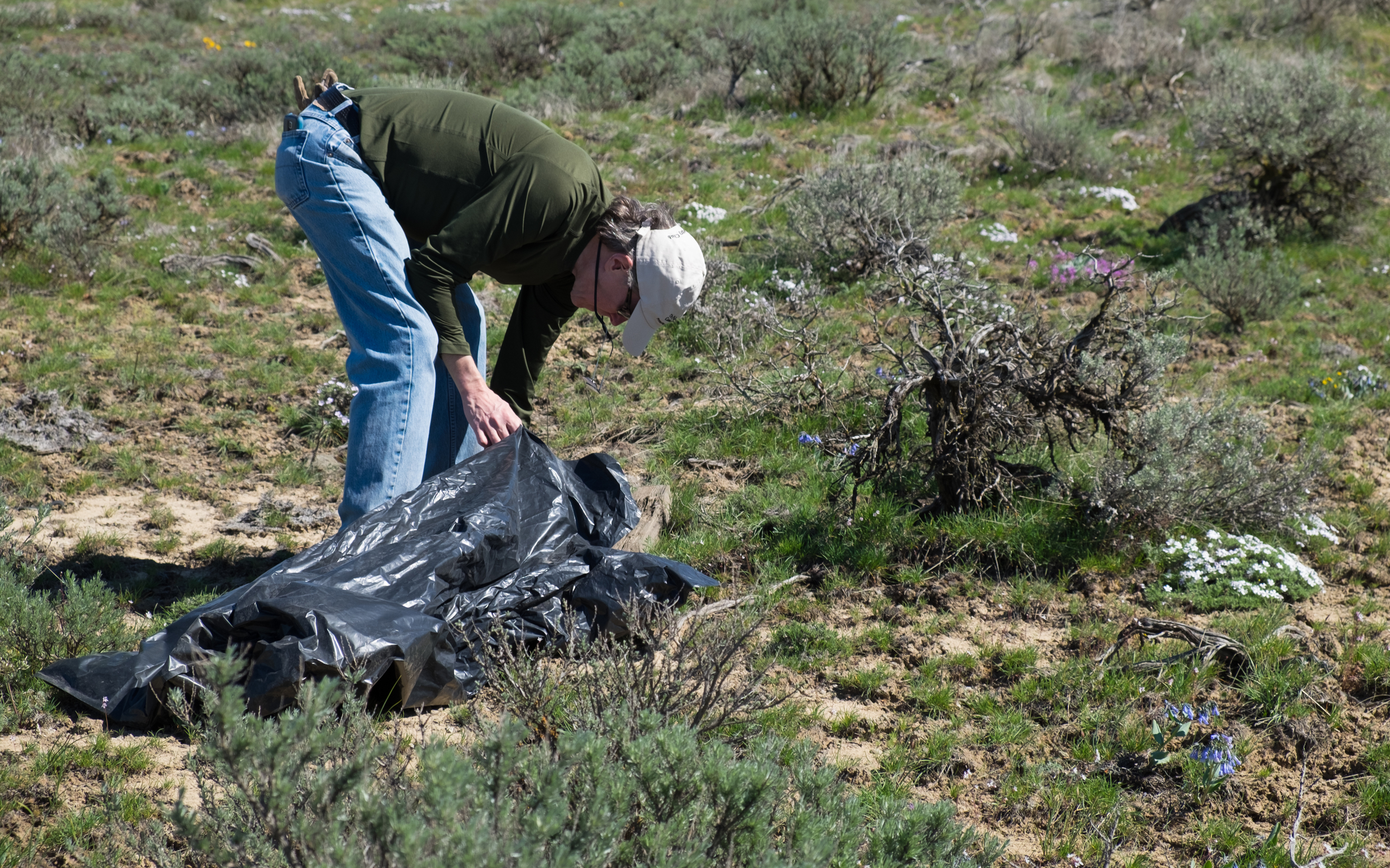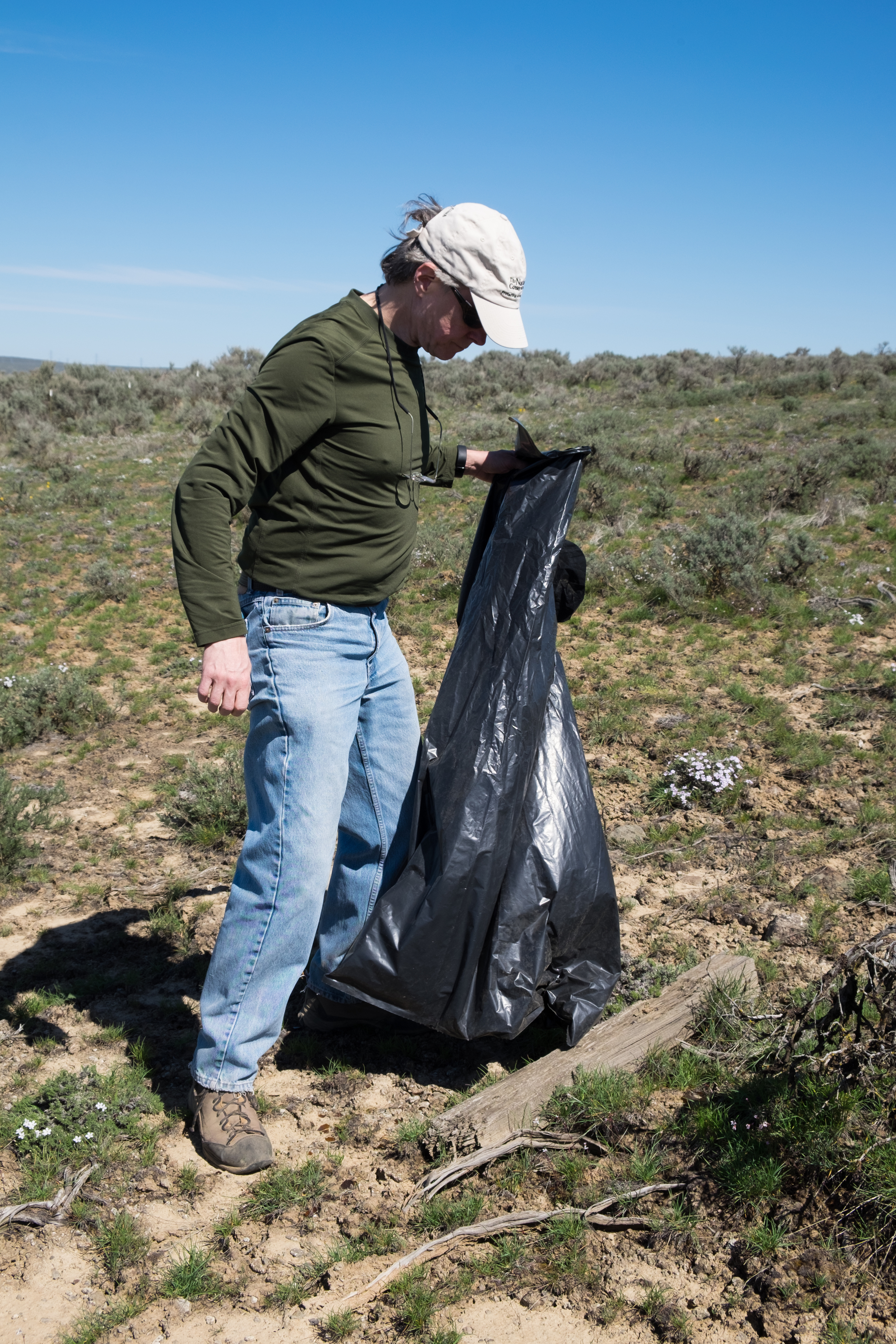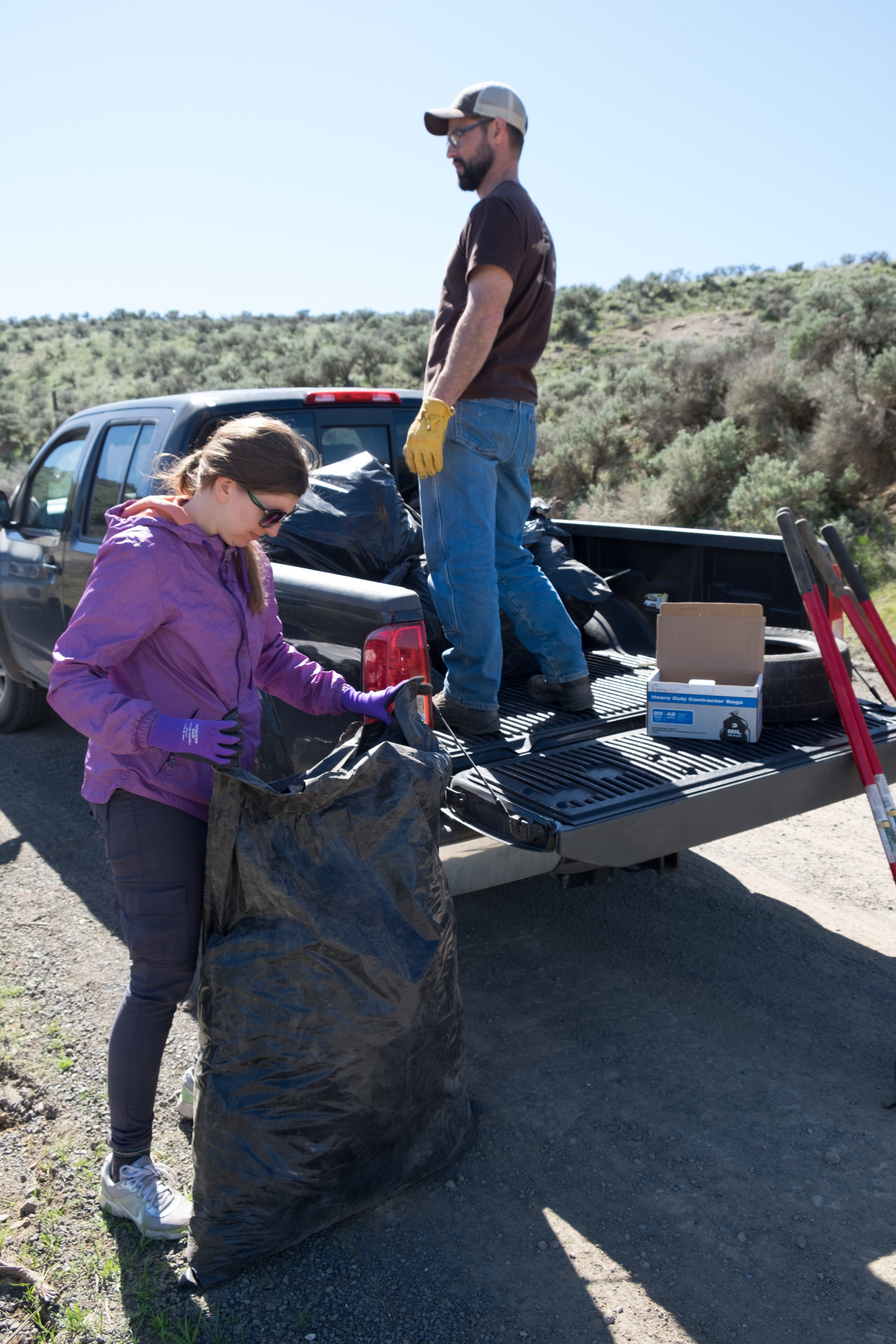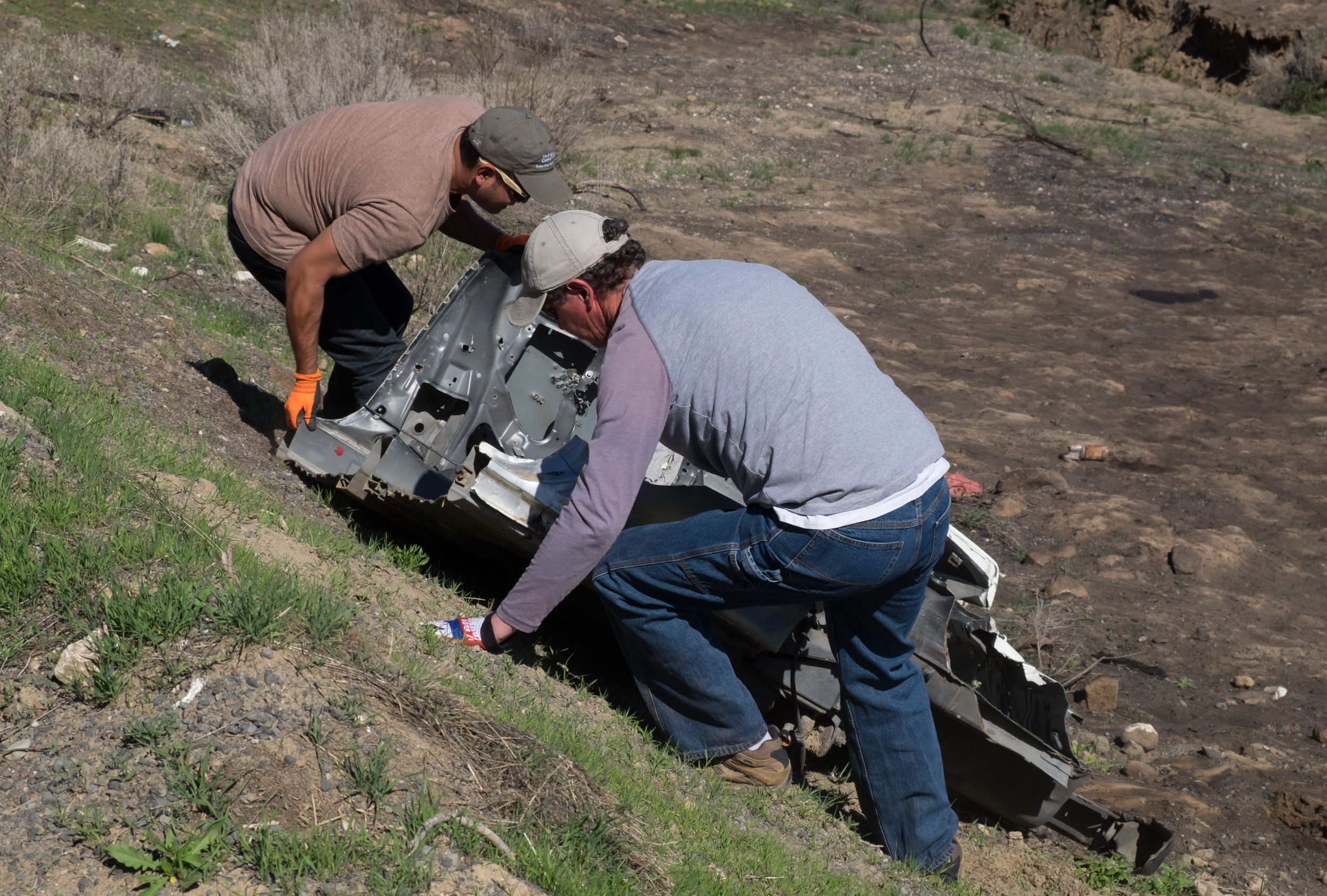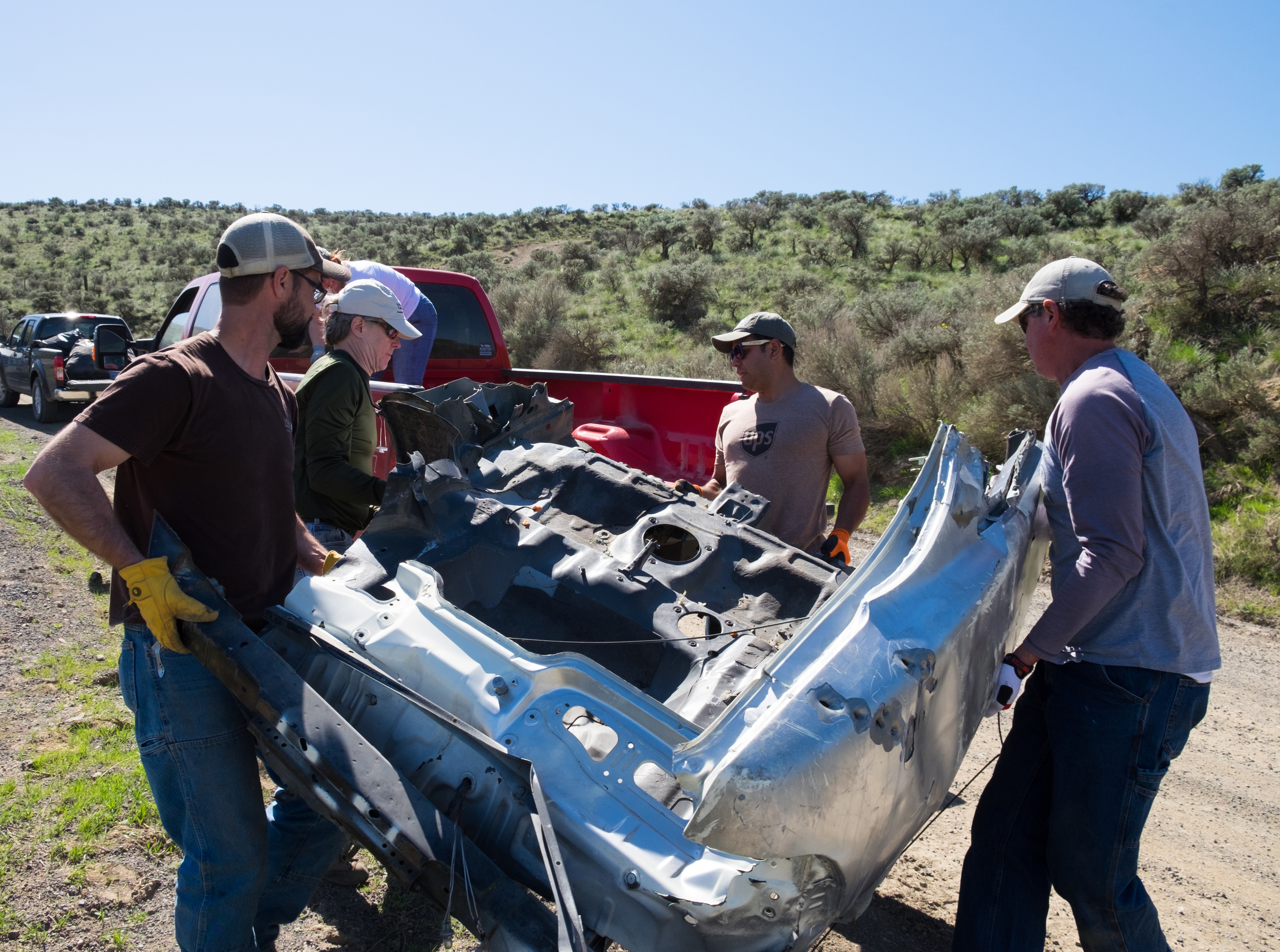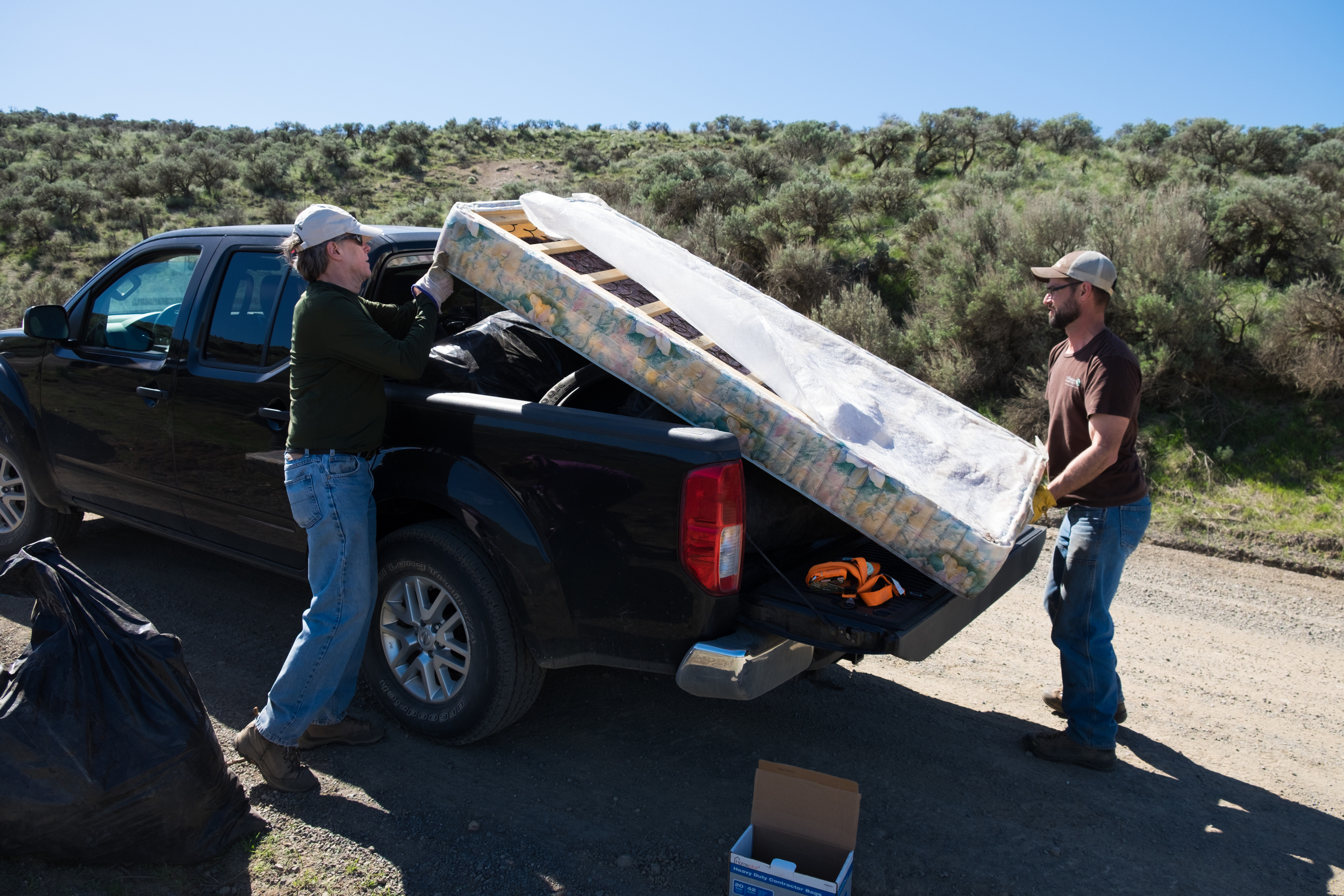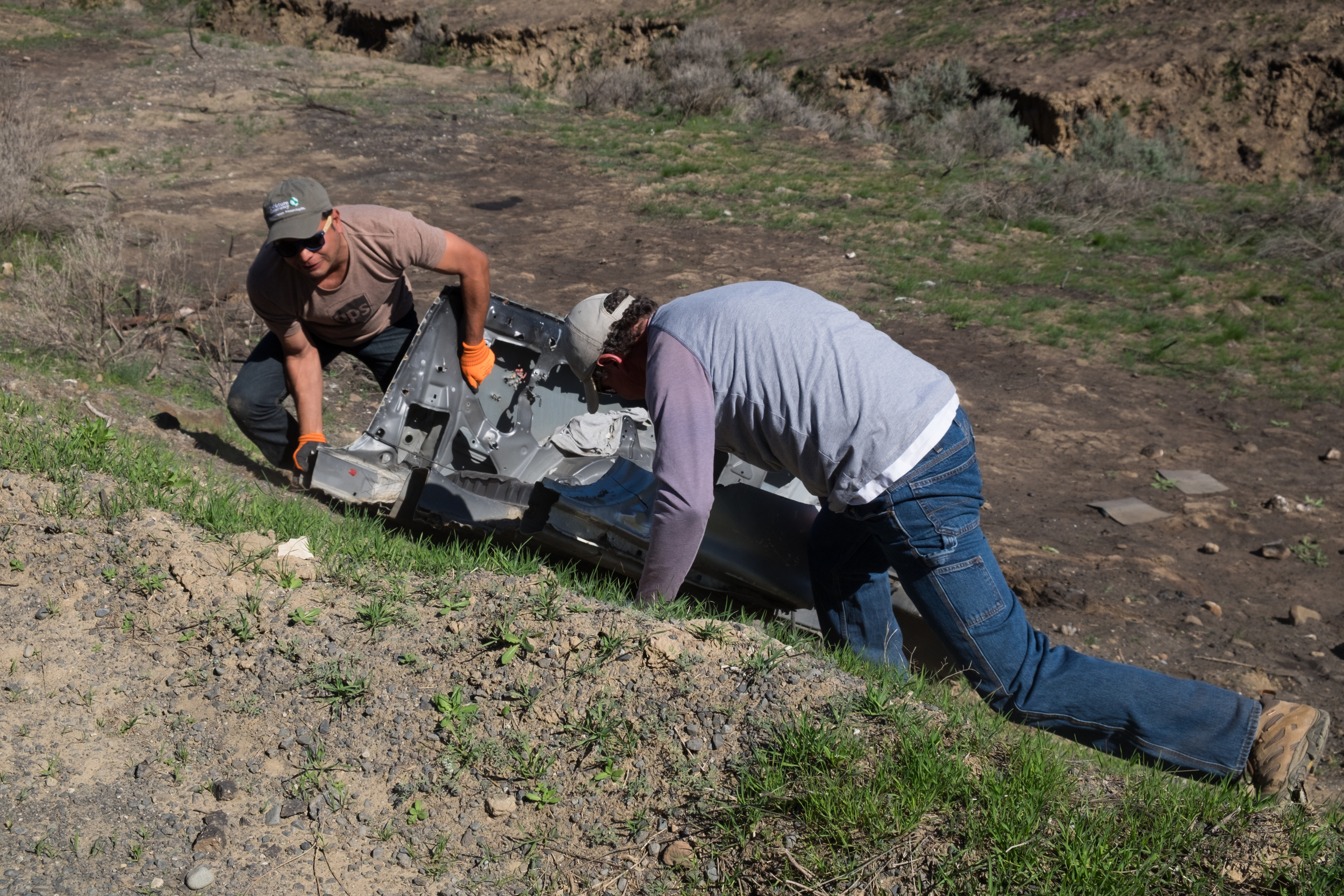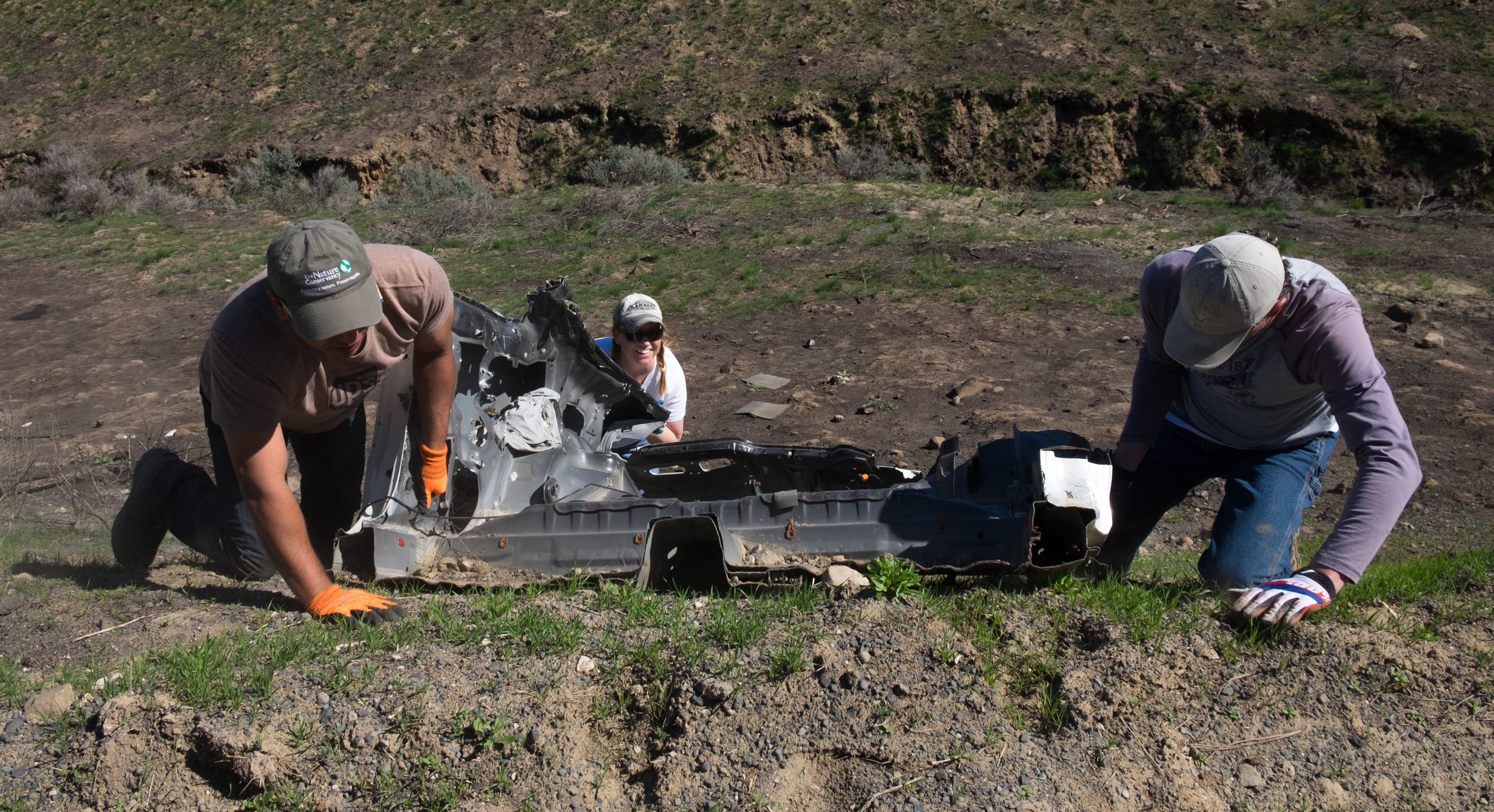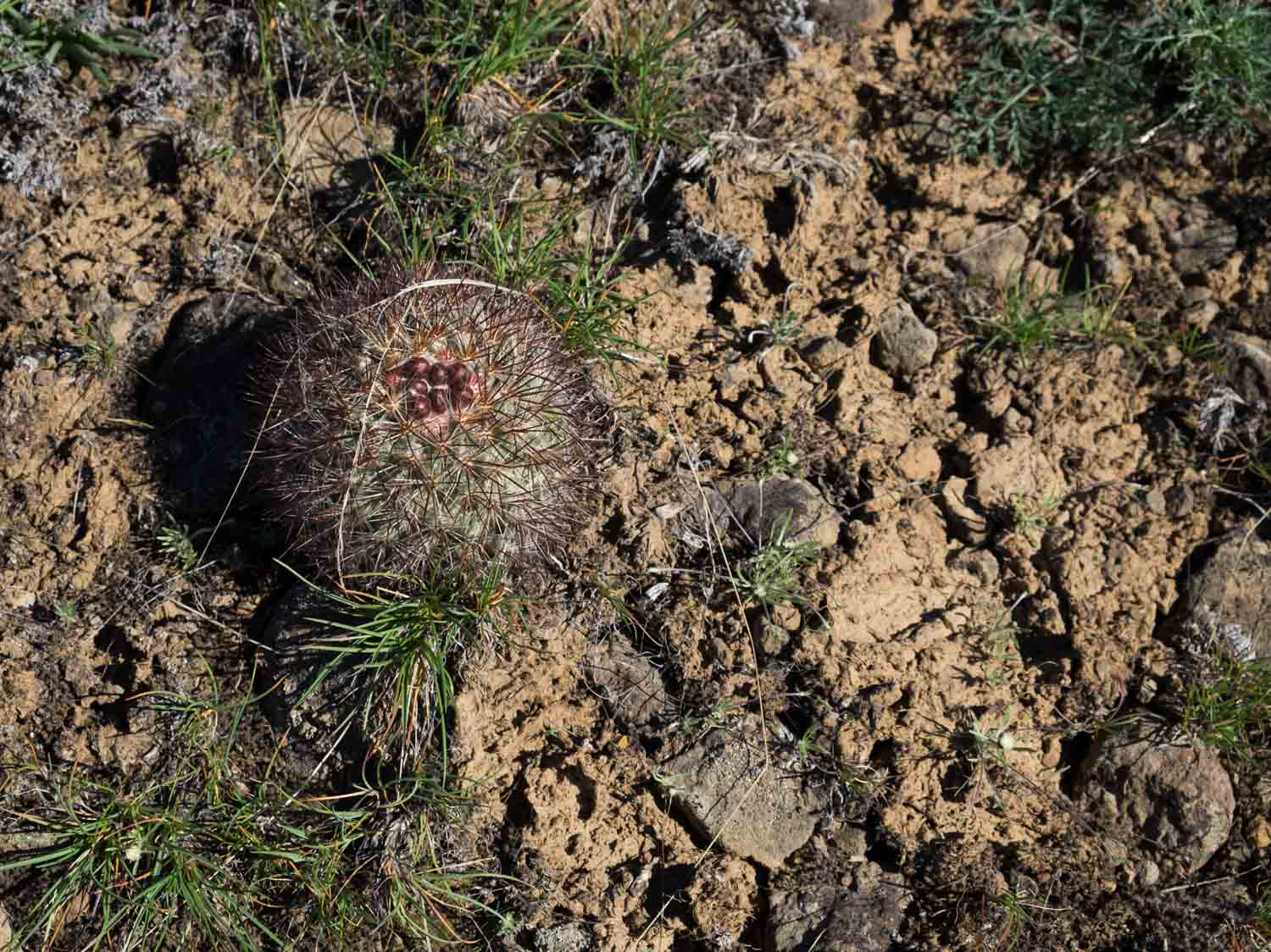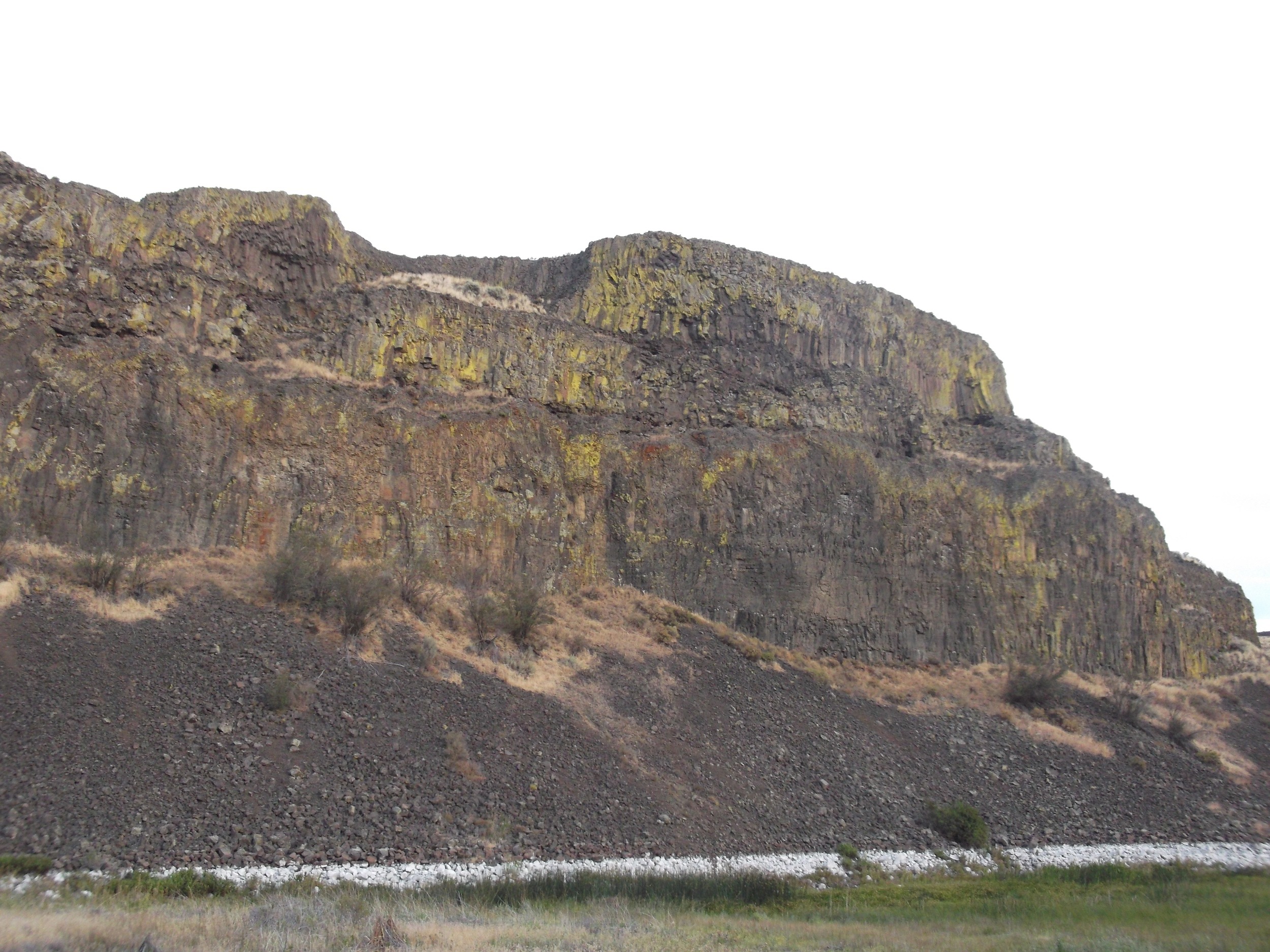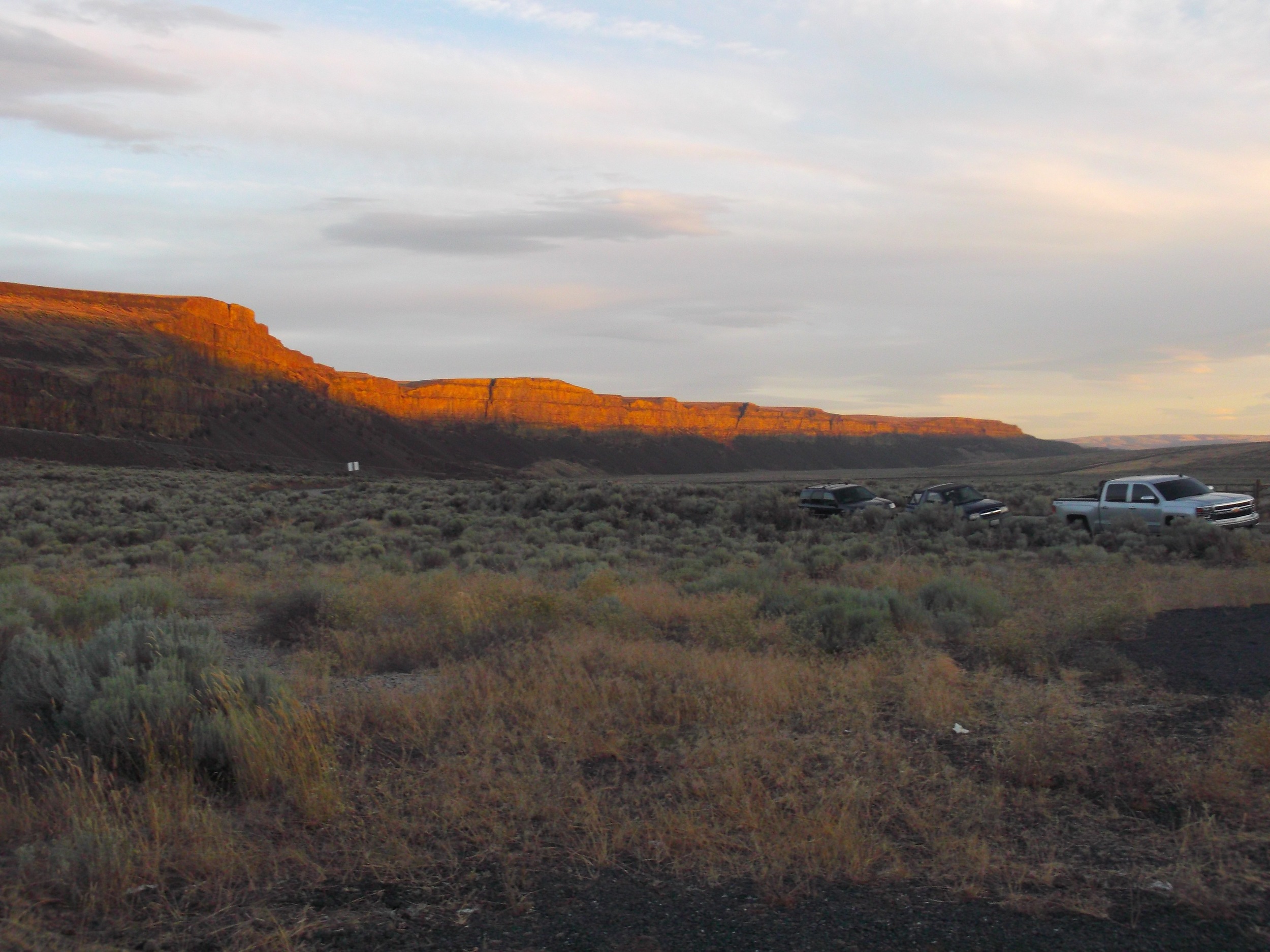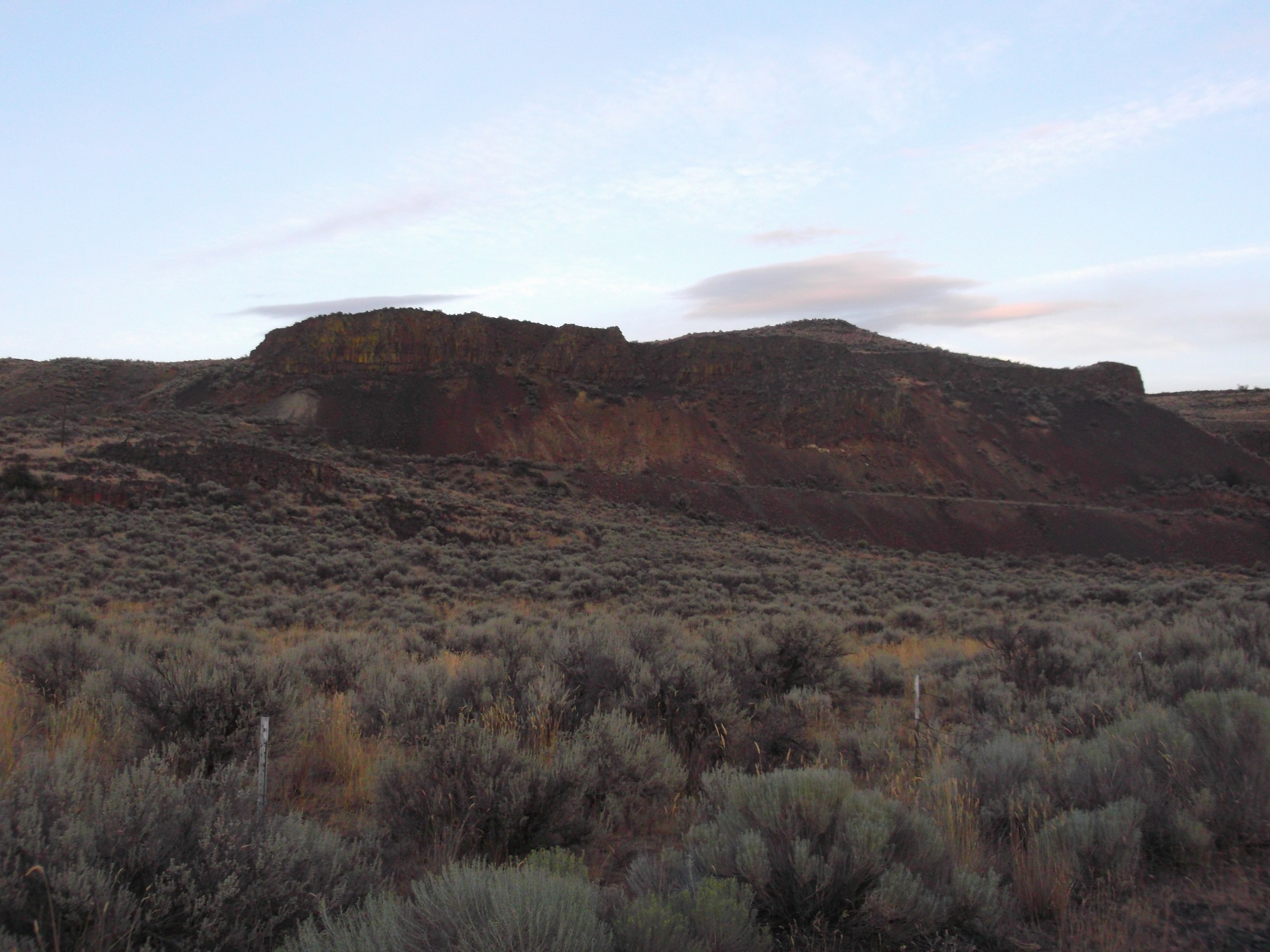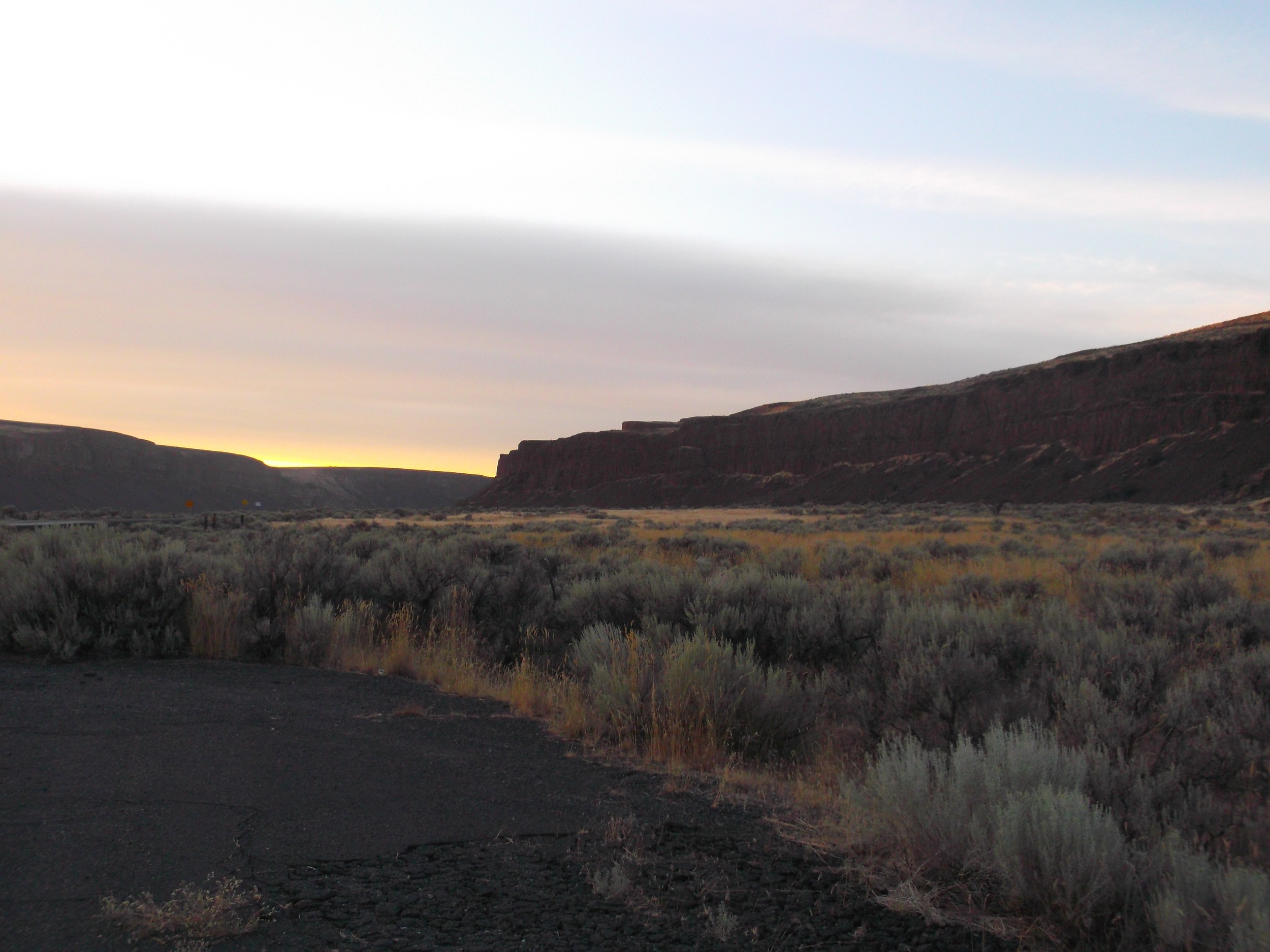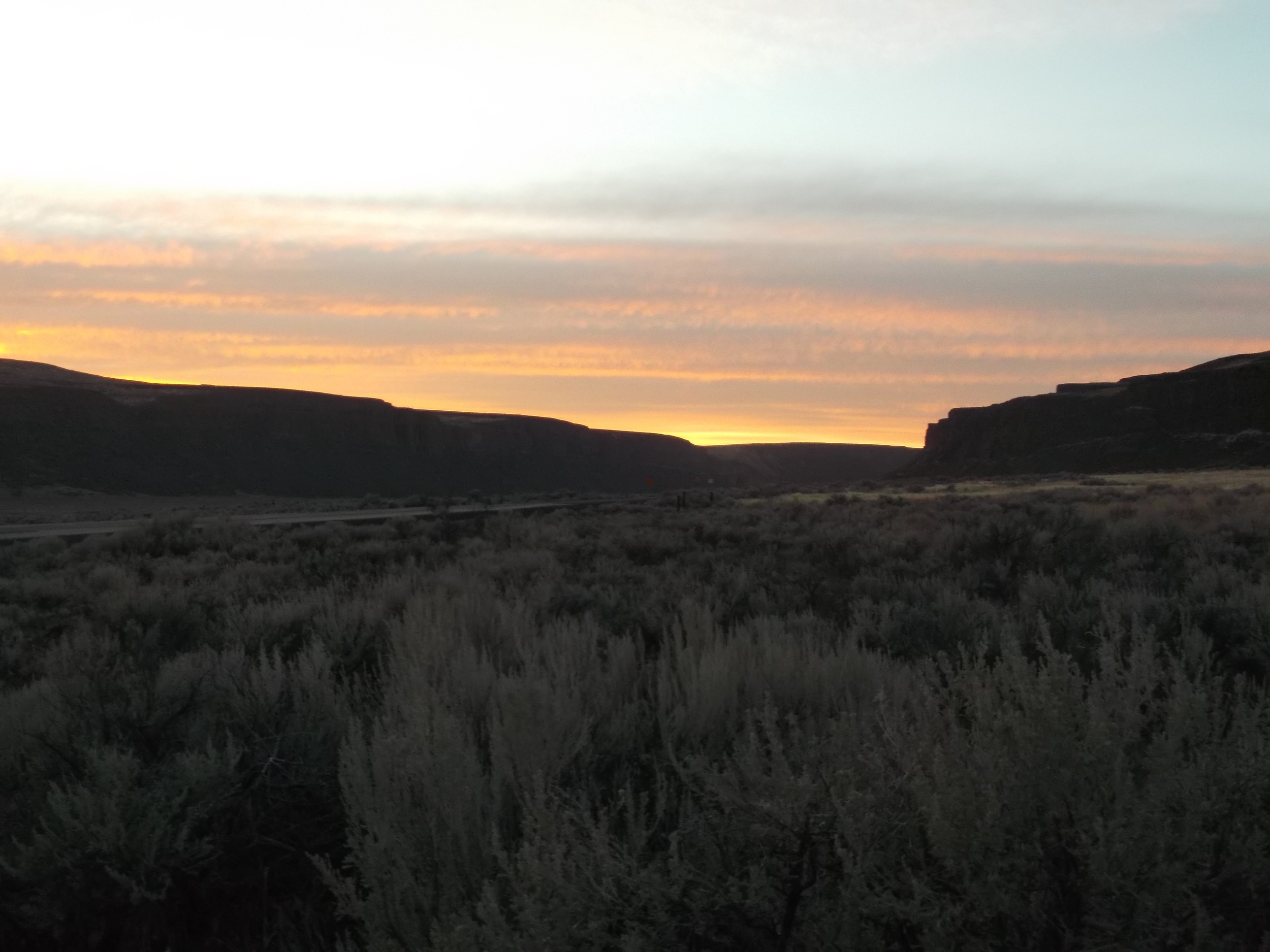Nestled in the cliffs in Moses Coulee is an import desert water sources that every springs attracts thousands of Pacific Tree frogs. I came to Whisper Lake for a night concert. It was anything but quiet. The chorus of frogs was soothing, calming—the quintessential sound of spring.
5 Nature Conservancy Preserves in Washington You Can Visit Anytime
Exploring Nature: Lichen Palettes
Gift of Land Will Aid Pygmy Rabbit Recovery
Bat Buzz is in the Air at our Moses Coulee Preserve
Searching for the right approach to recreation in the Beezley Hills
Our Moses Coulee-Beezley Hills Preserve is one of the Conservancy’s largest landholdings in Washington and we’ve been working over the last several years to share information and increase engagement with the local community in Central Washington.
Our commitment to community engagement was strengthened when I met a neighboring landowner to the preserve who told me that, at a recent Quincy Chamber of Commerce Event, many people identified the Beezley Hills Preserve as an area they valued, but were interested in knowing more about visitor access and trails in the region.
Exploring Moses Coulee/Beezley Hills
Exploring Moses Coulee I walk past a Say’s phoebe nest in the rafters of the patio. The parents seem to have adjusted to my common intervention into their space. I follow the edge of the lake to the trailhead and as I enter the trail, my attention shifts from the mallards and American coots diving in the water to the tall sagebrush and rubber rabbitbrush. Remnants of several different animals remind me of the varying wildlife that also call the Preserves home. I step over mule deer and sage thrasher tracks in the dried dirt, pass jackrabbit scats, and hike around large badger holes that are likely now home to smaller mammals.
What Wildlife are We Spotting at Moses Coulee?
Adventures in Field Science from Port Susan to Moses Coulee
Participating in the adventures of field science as volunteer with Stewardship has taken me across the state, from Port Susan Bay to Moses Coulee. The experiences have been great opportunities to learn about the important and innovative studies we are doing at our preserves and a way to contribute to the bigger picture of conservation.
Bat-ting ONe Thousand at Moses Coulee Preserve
by Claire Kurlychek, Americorps Stewardship Assistant
A relentless hunter darts erratically through the air as twilight fades to dusk. The winged creature works to consume thousands of insects before the temperature drops and darkness drinks the last bit of light from the atmosphere. The mammal dips for a drink as its heart thunders hundreds of beats in mere seconds. The essential ballet continues to a near silent soundtrack of wingbeats and night hawks.
A pallid bat in Washington’s shrub-steppe. © Michael Durham
This epic tale continues night after night throughout the summer months, with a widespread and significant impact on agriculture, biodiversity, and medicinal applications that often goes unrecognized.
Flying rats, birds with fur, disease vectors…. Bats have been misunderstood and misrepresented in the folds of history. In recent decades, research is shedding light on just how imperative these unique creatures are to a cohesive environment.
Whisper Lake at dusk is prime time for bat viewing. © Claire Kurlycheck
In order to highlight the import role bats play in an ecosystem and contribute to species tracking, the Wenatchee field office has continued work with the North American Bat Monitoring project and reached out to folks who might not have had the opportunity to learn about these unique animals.
On a cool night in mid-July a group from the Wenatchee Ment2B YMCA mentoring program visited the Moses Coulee Field Station to detect a range of bat species. The group separated myths from facts, discovered the bat life cycle with Ella Rowen of Washington Department of Fish and Wildlife, and used an Echo meter to detect six different species of bats hunting near Whisper Lake.
In the month of August, the Conservancy participated in the North American Bat Monitoring project (NABat) for a second year. NABat utilizes a network of partnerships across the continent to gather reliable bat population data. Historically Moses Coulee has recorded 14 of the 15 bat species in Washington State. In 2018, 11 different species of bats were detected in Moses Coulee: Pallid Bat, Big Brown Bat, Hoary Bat, Silver Haired Bat, Little Brown Bat, California Myotis, Western- Small Footed Myotis, Western- Small Eared Myotis, Fringed Myotis, Yuma Myotis, Canyon Bat. The data collected in 2019 has been sent to Oregon State University, the Northwestern NABat Hub, for analysis. The results will be reported mid-winter to determine if Moses Coulee continues to be prime habitat for the relentless hunters.
Banner photo © Michael Durham, Durmphoto.com.
Conservation Adventures in the Shrub-Steppe
Moses Coulee Inspires Artists
Discover Washington's Shrublands
Natural Beauty Hidden in Plain Sight
Celebrating our Volunteers in Bat Country
The Two-Minute Takeaway: What is a Coulee?
Listening in the Night
Photographed by Anna Snook
On a nice summer night, with a sky full of bright stars, it was a wonderful time for our volunteers and for spotted bats! Experience the bat survey fun with the slideshow of photos above.
For over 13 years, The Nature Conservancy has conducted spotted bat surveys on our Moses Coulee preserve with the help of our volunteers. This July, two groups of volunteers gathered at Moses Coulee to listen for the unique calls of the elusive spotted bat. Volunteers of all ages participated in using specialized audio equipment to learn more about the different bat species of Moses Coulee and gather data on the presence and behavior of the spotted bat. This data is used to help understand how habitat loss and White Nose Syndrome impacts the spotted bat and will aid in species conservation.
LEARN MORE ABOUT SPOTTED BATS
VISIT OUR MOSES COULEE PRESERVE
Talkin’ Conservation Communication
Written and Photographed by Nick Altadonna, Eastern WA Stewardship Coord.
It probably comes as no surprise that most land stewards are not the gregarious type. Few of us dreamt of “fighting the good fight” via WebEx calls, stakeholder meetings, or social media, in spite of the benefits to our cause. Winning friends and influencing people to support the mission, is not usually our natural inclination…restoration planning, protecting preserve resources, ecological monitoring, and soaking in wild places seem to make a lot more sense.
As a firm believer that nature conservation is intrinsically intertwined with the needs of people, and suffering a steward’s disposition, I often feel hamstrung upon the social stage in which so much of The Nature Conservancy’s work takes place. Embracing my inner extrovert to champion our work is tough, but thankfully I have an opportunity through our volunteer program.
The personal power of the volunteer program, is that I can engage and be engaged by the public in a setting and a style that’s my own. Out on our preserves, communicating about conservation is easy, naturally inspired, and not subject to deadlines. Through volunteer stewardship, you not only meet a person’s need to tangibly affect nature conservation, but also to share the story behind that ethic. Take the time to listen to their story, and it’s often reciprocated in kind. It is at this intersection that I found Volunteer Steward Paulette Murphy, out in Lind Coulee.
Paulette grew up in a rural setting outside the Tri-Cities and in a past life was a NOAA climate scientist, one of a collection of amazing threads from her tale I am still unraveling. Now a resident of greater Seattle, her ethic is nourished in the fantastic geology of the Columbia Plateau, working with her hands, and rediscovering the nature of eastern Washington. Given her interests, our conversation “magically snowballed” into TNC’s work on the “sunny side” of the state, and as the dust settled on our fence retirement at Lind, we concocted a plan to get her in on the action. Two weeks later, she accepted my proposal to serve as a Volunteer Steward, co-leading monitoring of our Moxee Bog & Yakima River Canyon preserves.
Now that’s my kind of talk.
VISIT MOSES COULEE
Hunters Become Stewards at Beezley Hills
Written & Photographed by Anna Snook, Northwest Photographer
Everyone who loves the outdoors interacts with it in different ways. Some of us go out to shoot with cameras; some of us, to shoot with rifles. Some shoot wildflowers and landscapes, some shoot animals, and some shoot glass bottles. All these activities intersect on the Beezley Hills preserve in Eastern Washington. By day, Beezley Hills is an expansive steppe; the sprawling sagebrush reaching to the sky in all directions, dry ground under foot. In the spring, it’s home to dozens of wildflower species – balsamroots bowing their golden heads in the breeze, sprinkled with the purple of phlox and shooting star, followed by lupine and camas. In the fall, home to a hunting tradition that precedes the preserve’s TNC days.
Several times a year, local hunters are provided the opportunity to learn more about the preserve, and the chance to take care of it – in exchange, they get hunting rights on the land. When we’ve seen what kind of conflict can arise from “othering” in states like Washington, Oregon, and Idaho, a project like The Nature Conservancy’s Hunter Steward program is heartening. It shows us that there are environmentalists, and there are hunters, and there are both. Conservation is as simple as that: people who love the land take care of it, no matter how they use it.
So, on a warm sunny Saturday in April, you might find a few of these dedicated stewards, bags in hand, picking up everything from broken glass bottles and beer cans, to burn piles and even car frames. Hopping out of their pickup in between clean-up sites every time they see a bit of roadside litter. Finding hidden treasures among the trash – a marble, a usable car part, a coin. Every once in a while, standing up to take in the never-ending sky, or the mountains, or the perfume of sagebrush. It’s all in a day’s work on the Beezley Hills preserve.
Anna Snook is a Northwest photographer, see more of her work!
Learn more about our work at Moses Coulee and Beezley Hills
Learn how you can volunteer too!
Winging It: The 2015 Bat Count
Citizen science is critical to spotted bat monitoring in Eastern sagelands
Written and Photographed by Cailin Mackenzie, GLOBE Intern
Twenty-four committed volunteers gathered on July 25th to count bats at the Conservancy’s Moses Coulee preserve, home to the largest concentration of spotted bats in the state. Collecting this data not only furthers white nose syndrome research and treatment, but also informs wind turbine impacts on bat migration. Although the wind made hearing the bats’ distinctive clicking noises difficult, we enjoyed a meditative evening under the stars surrounded by the coulee’s unique shrub-steppe ecosystem.








